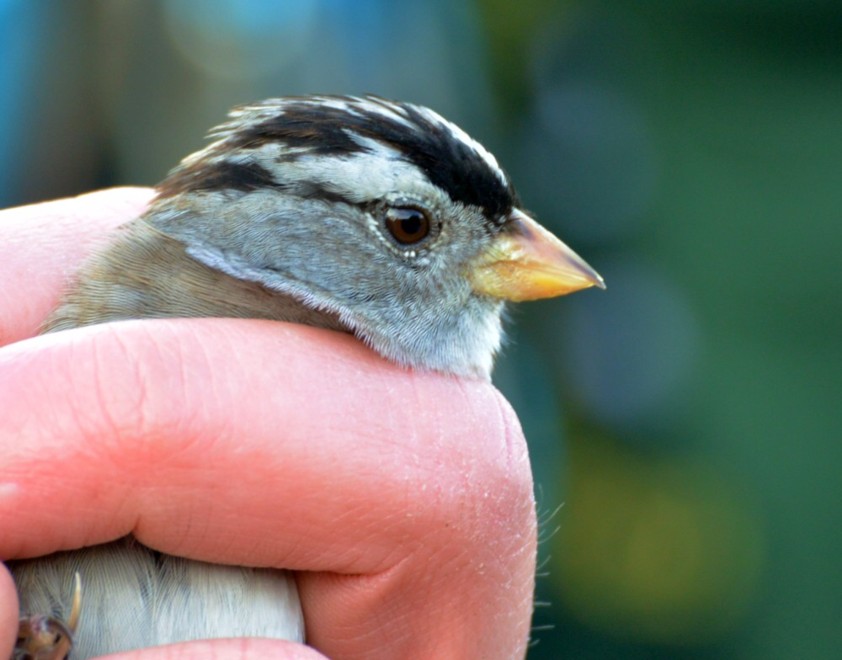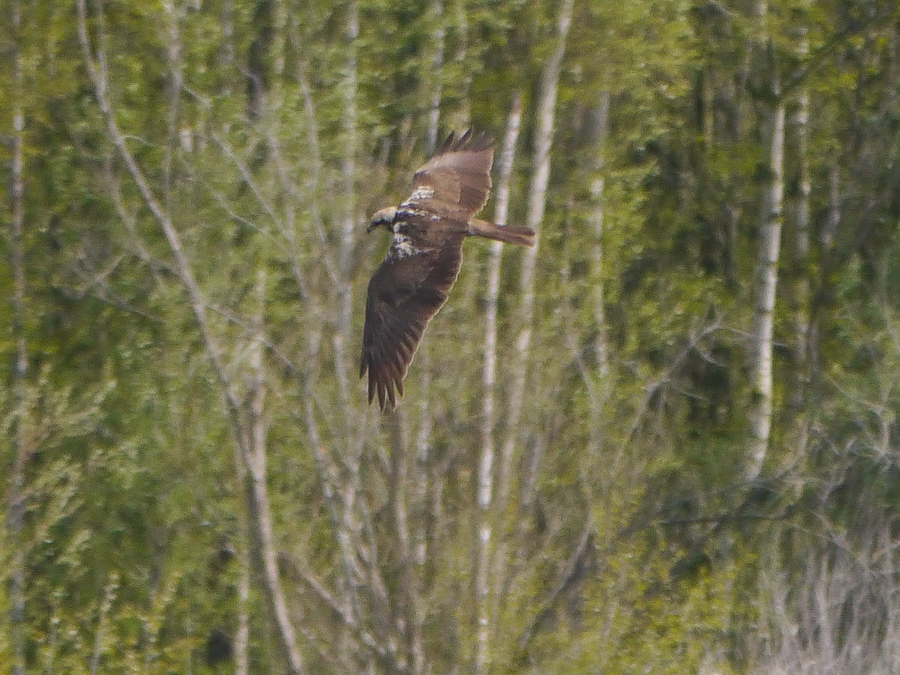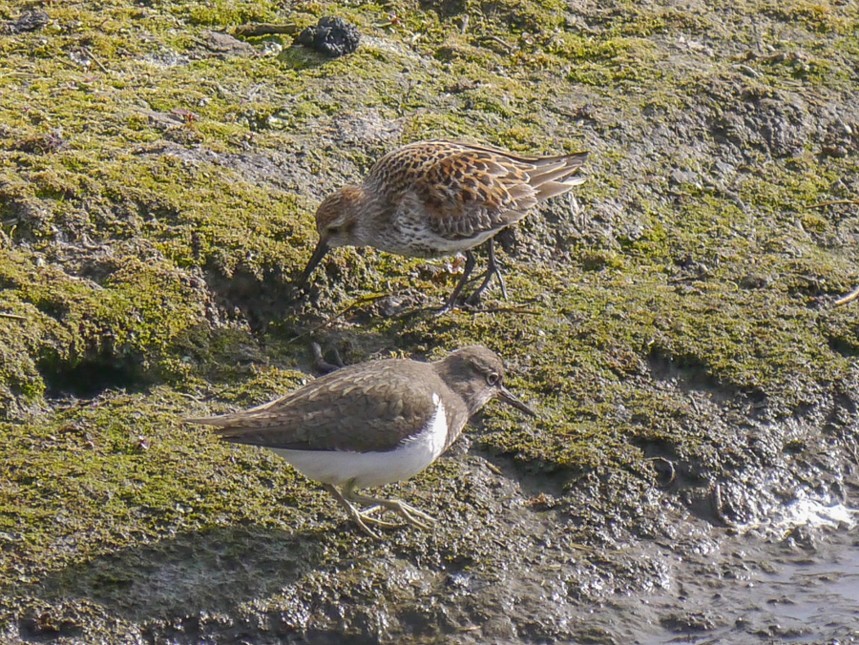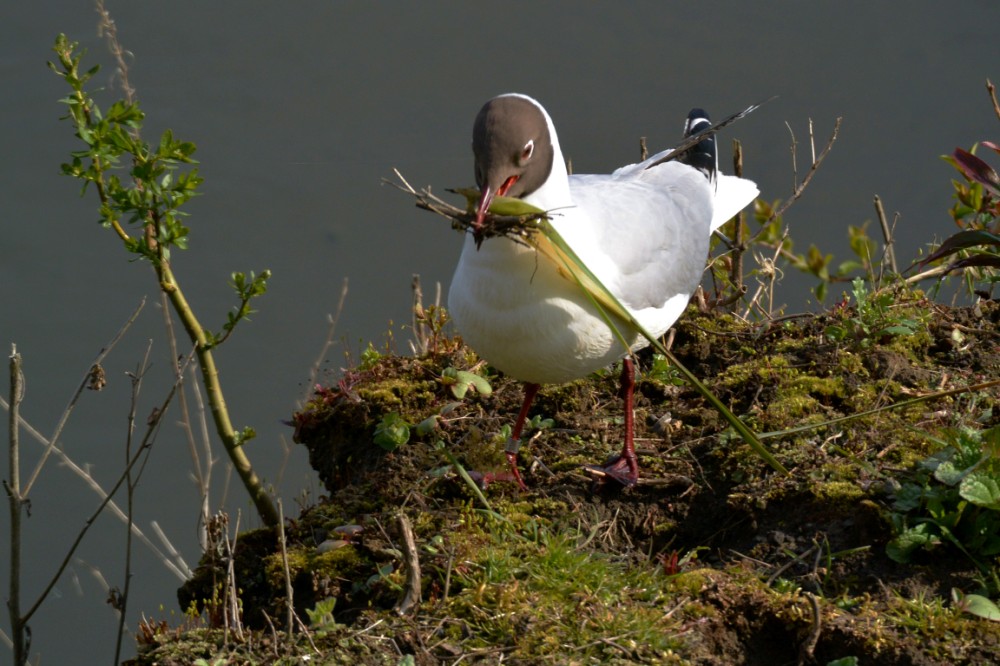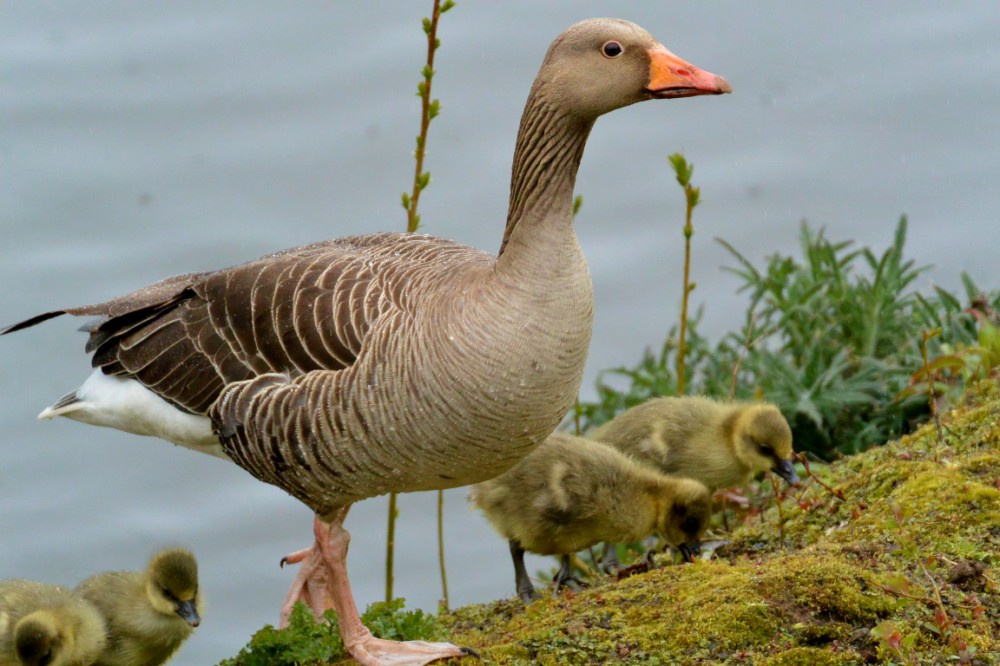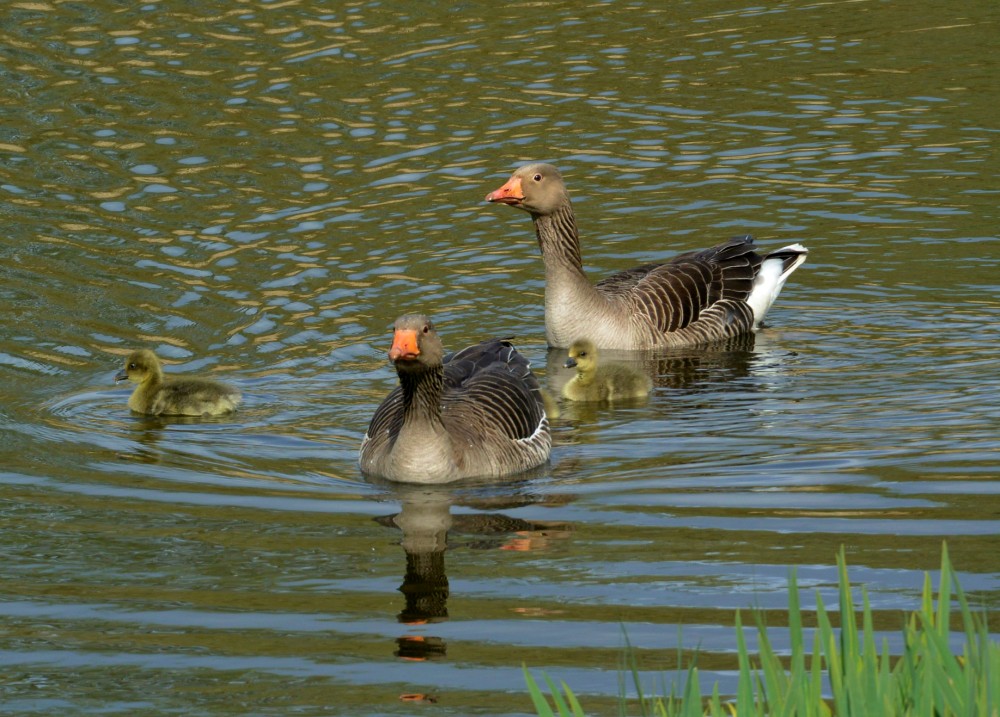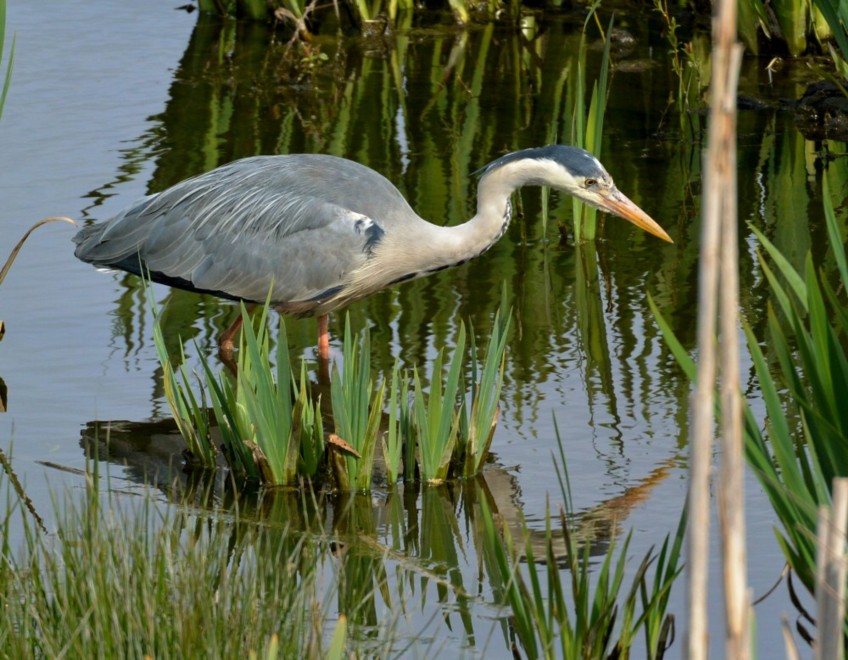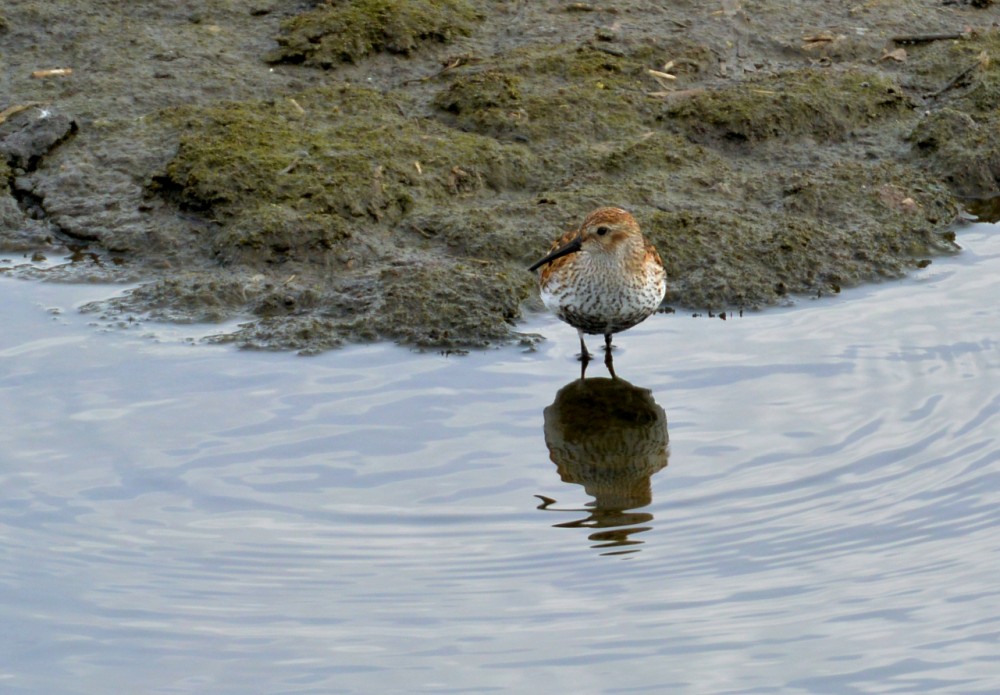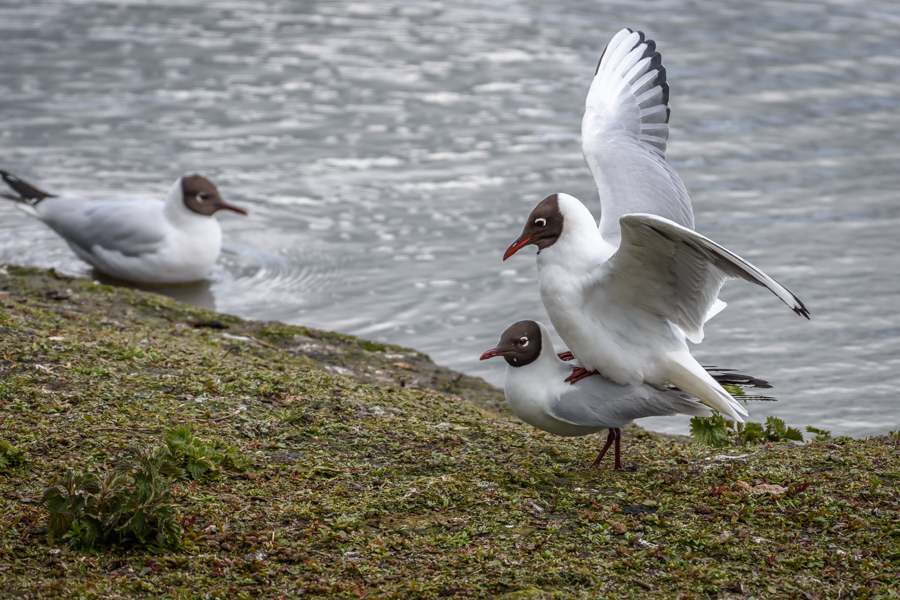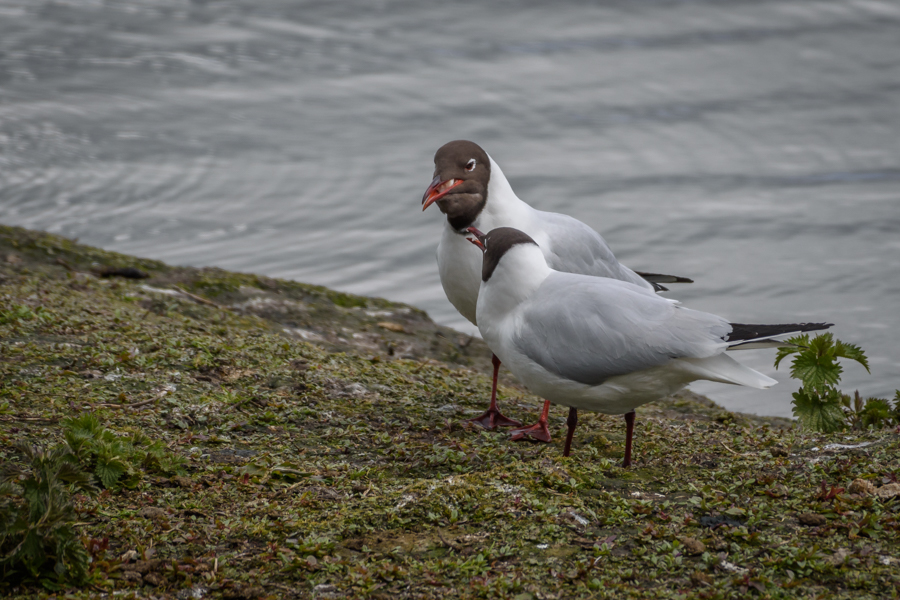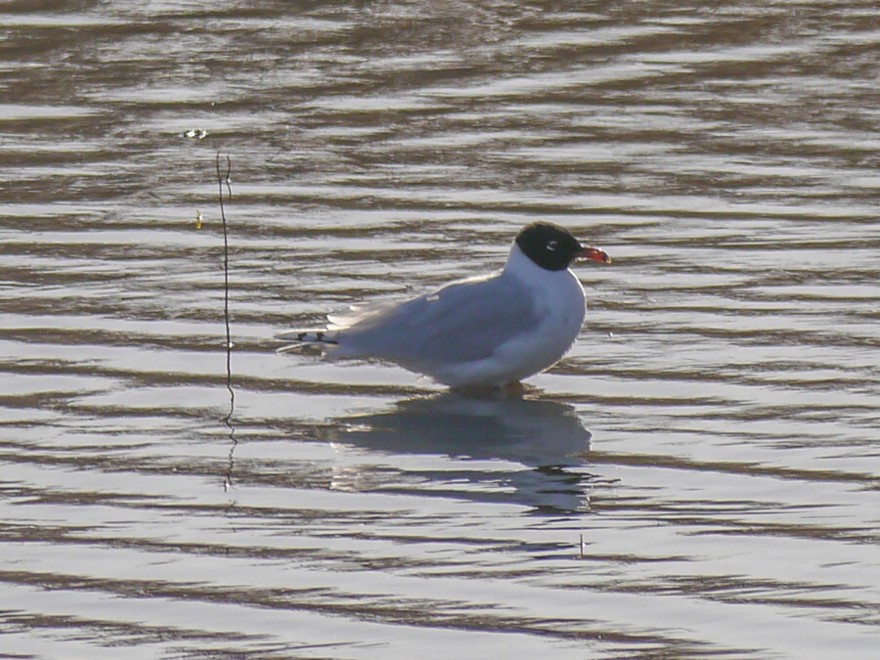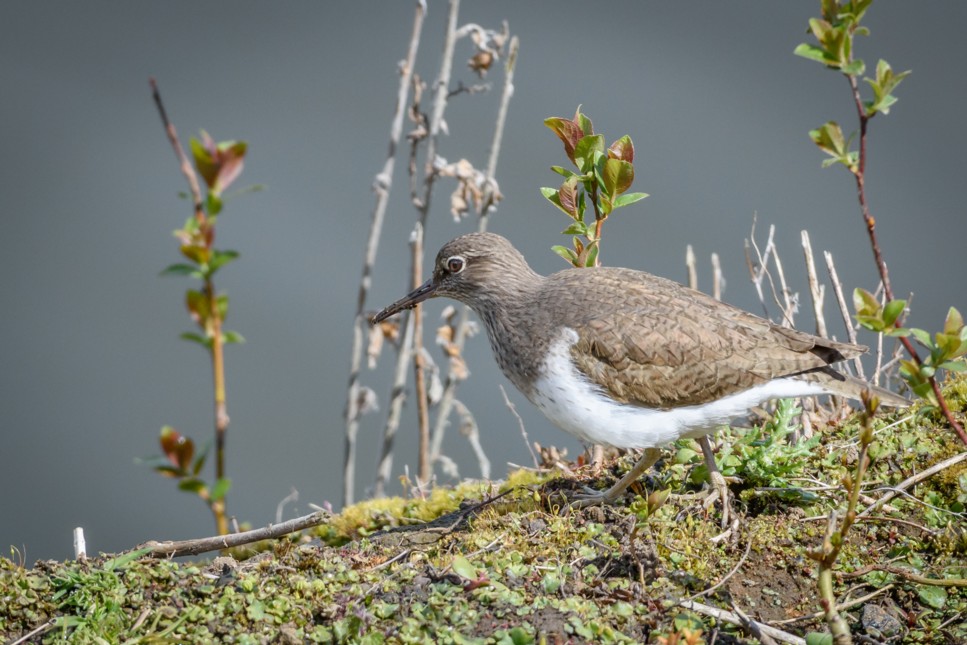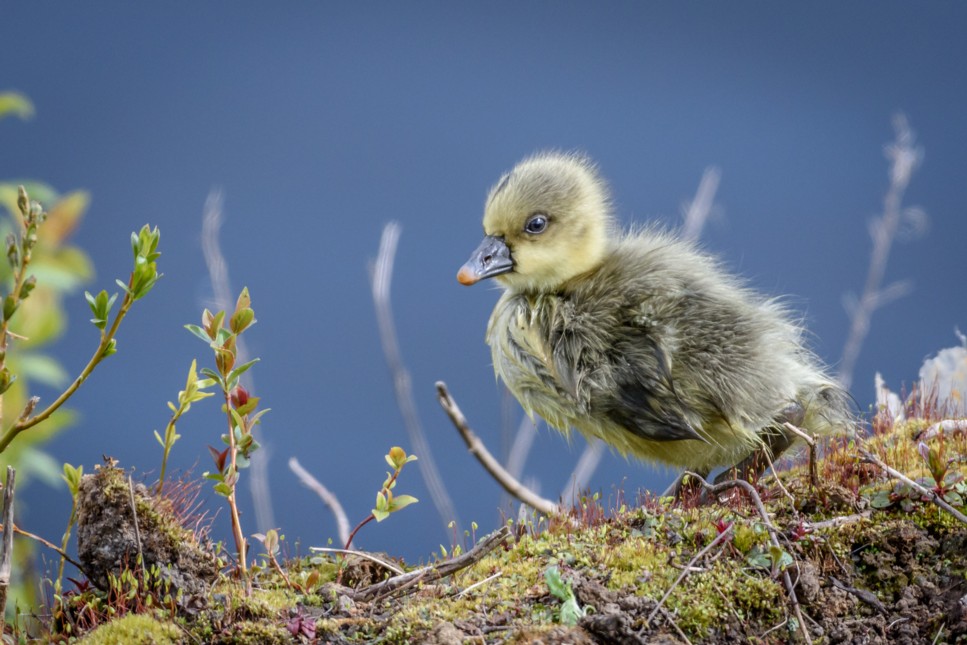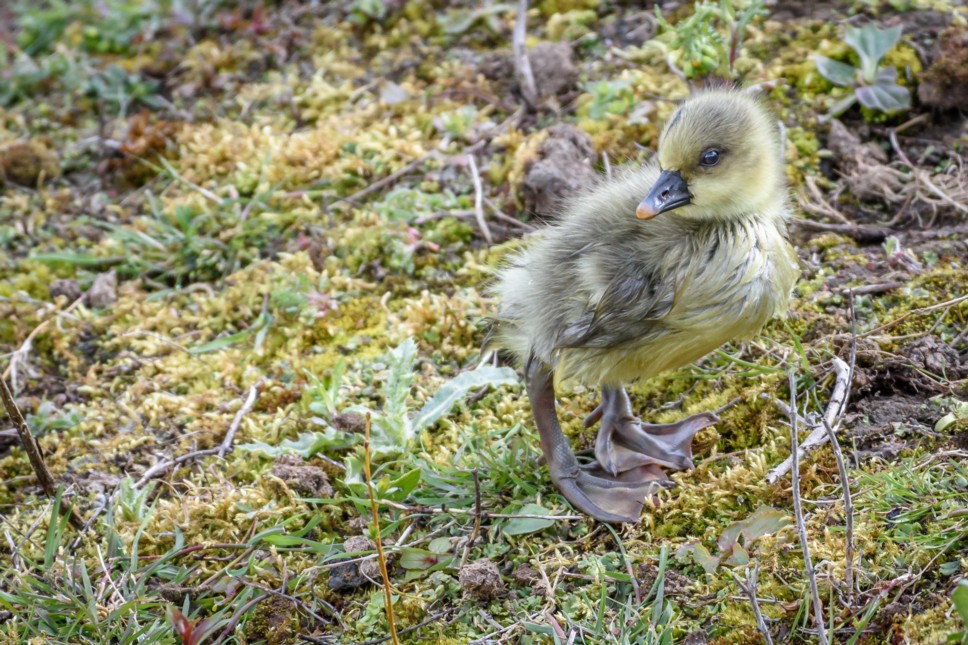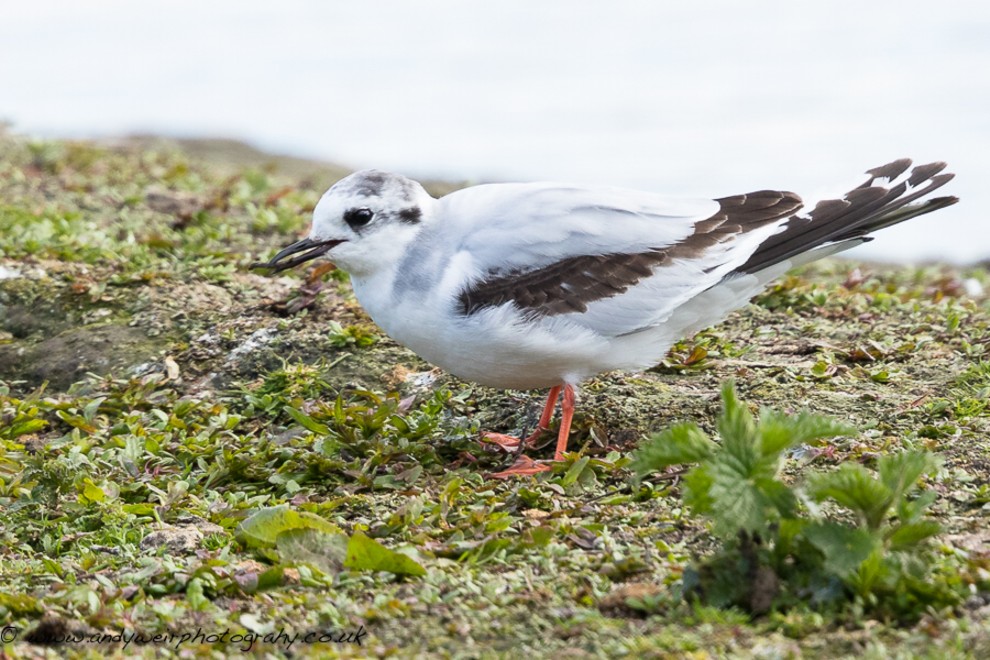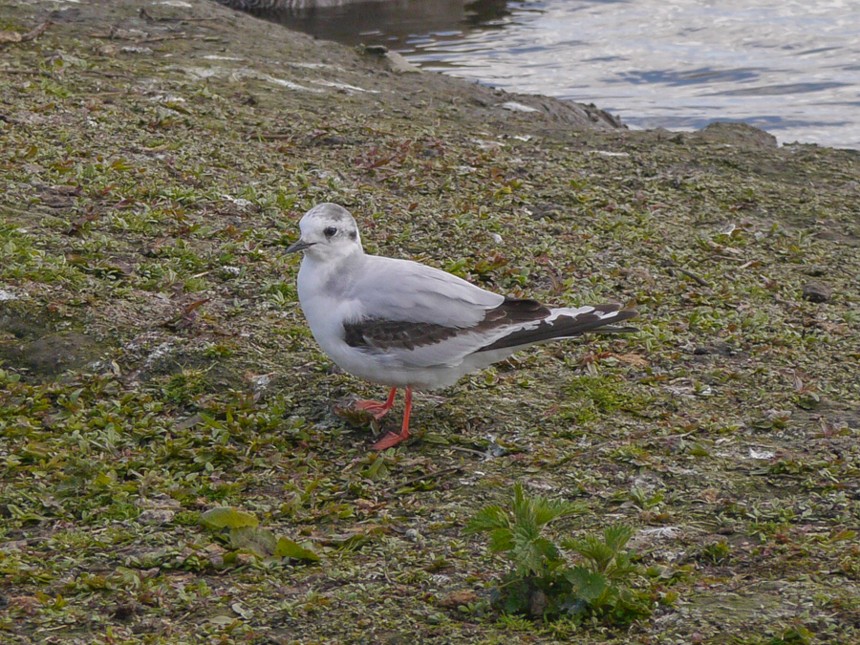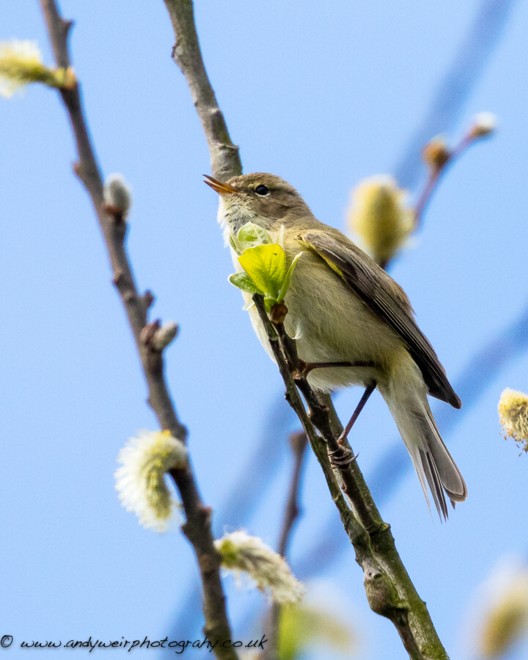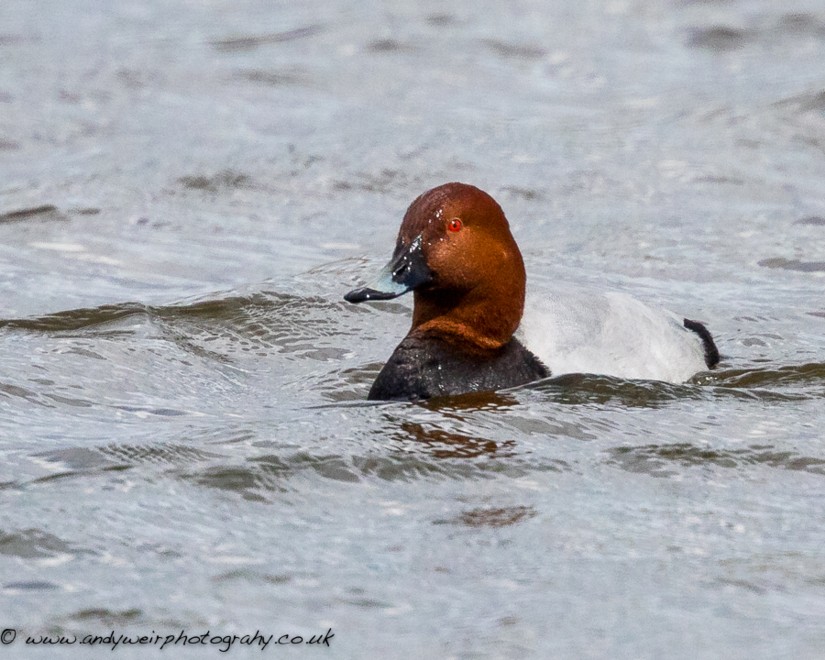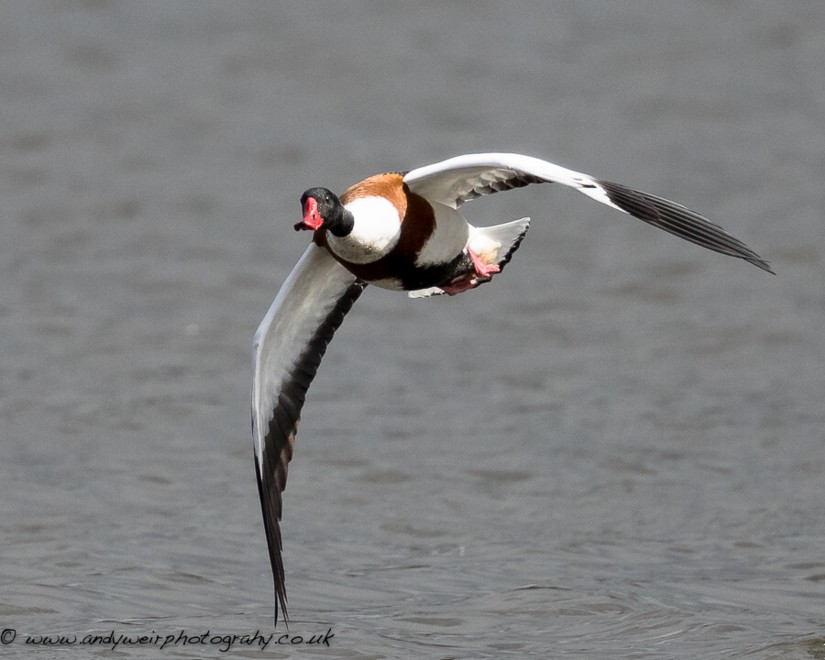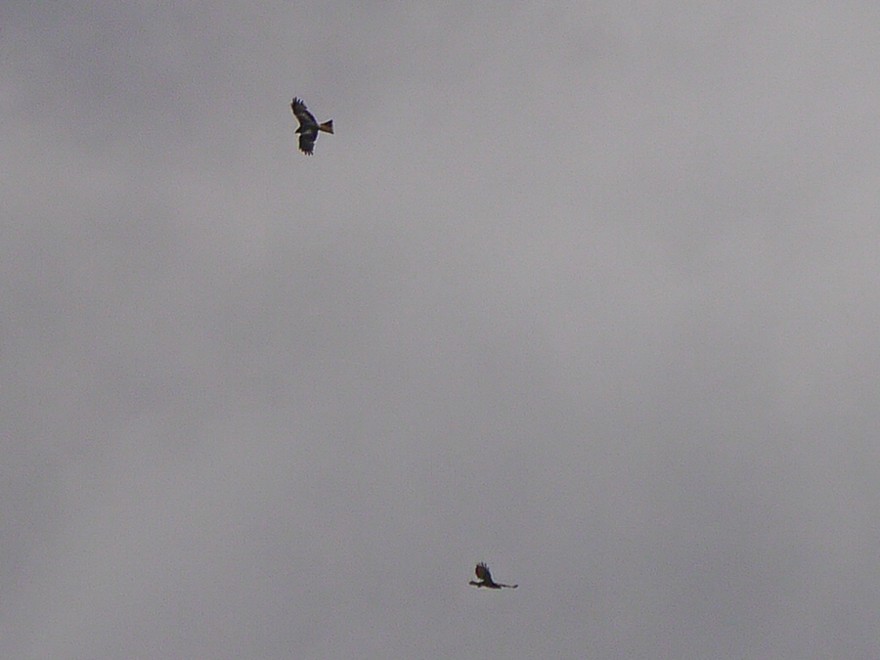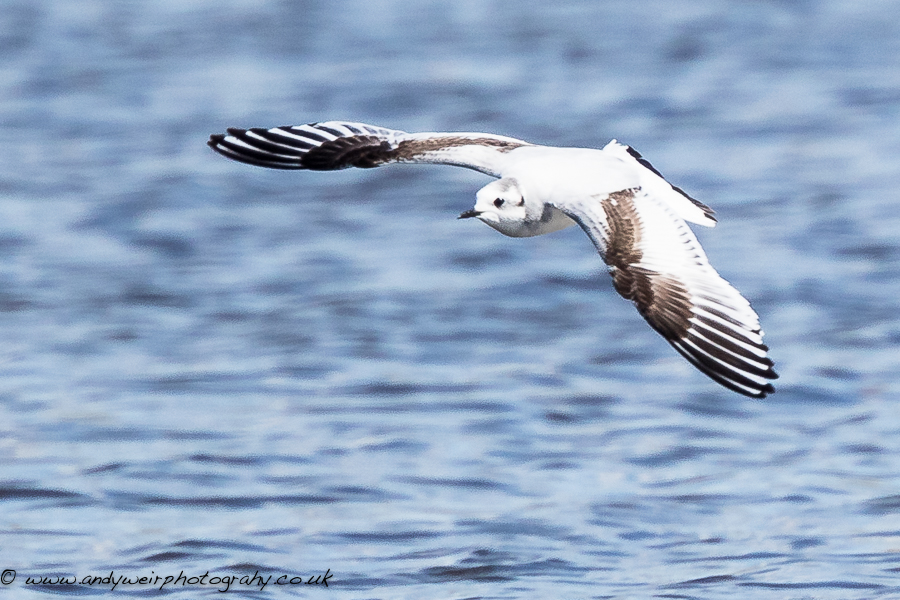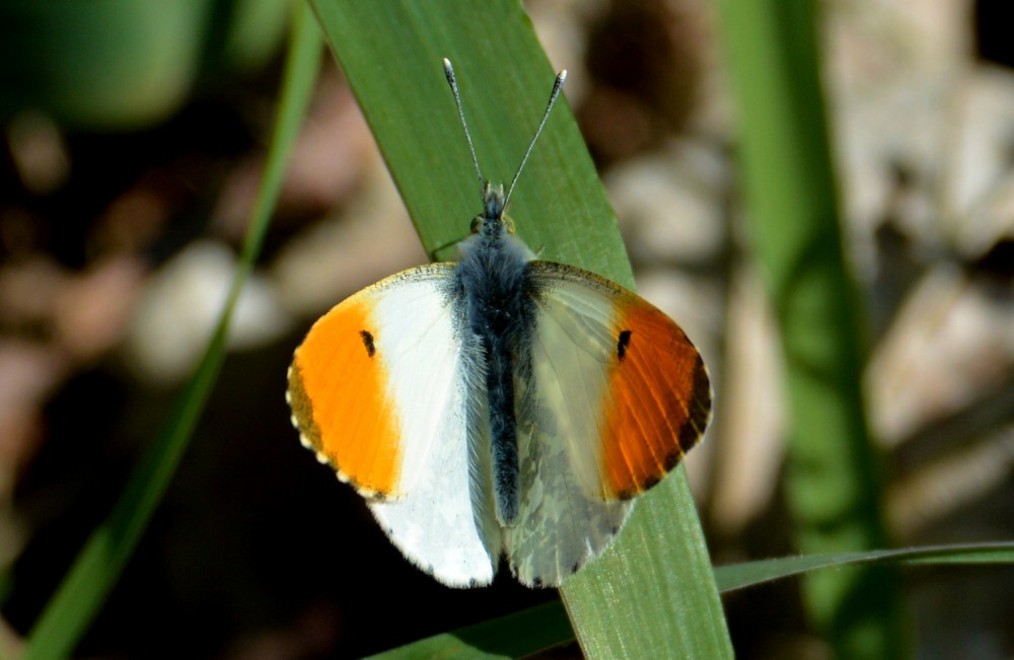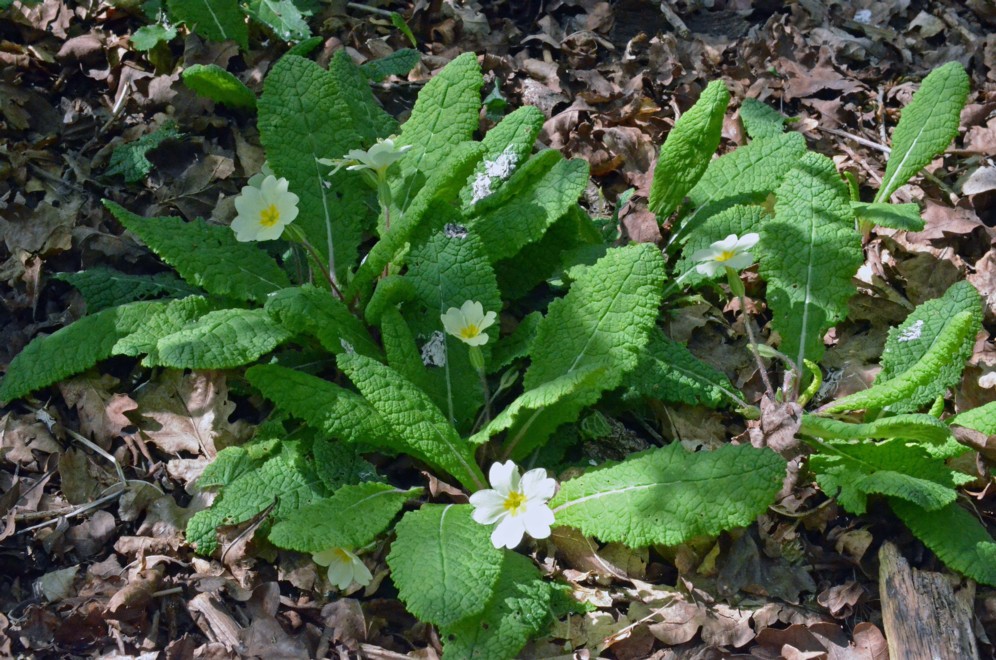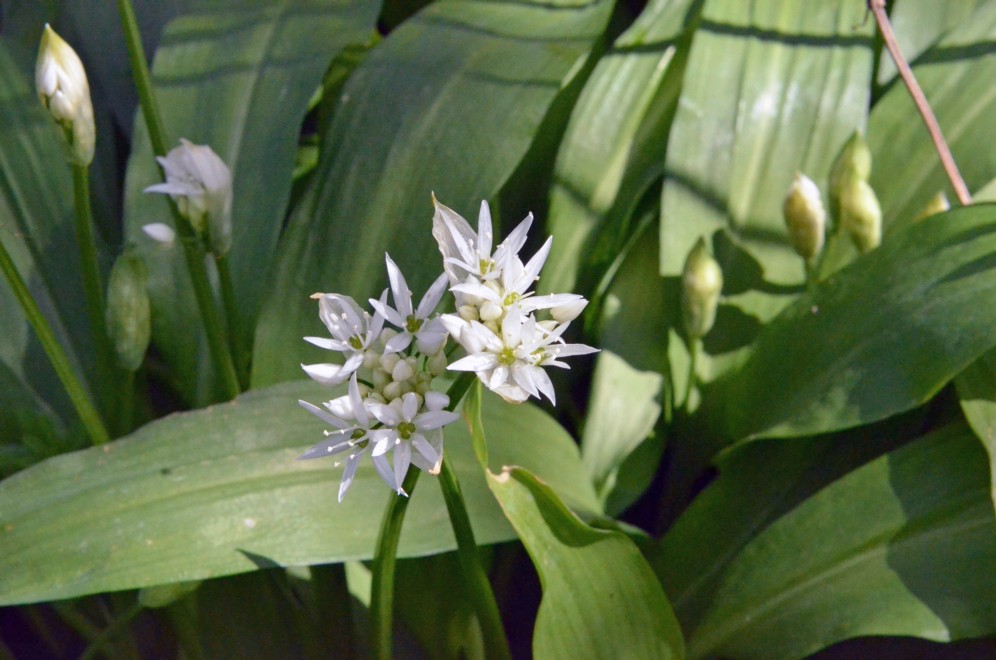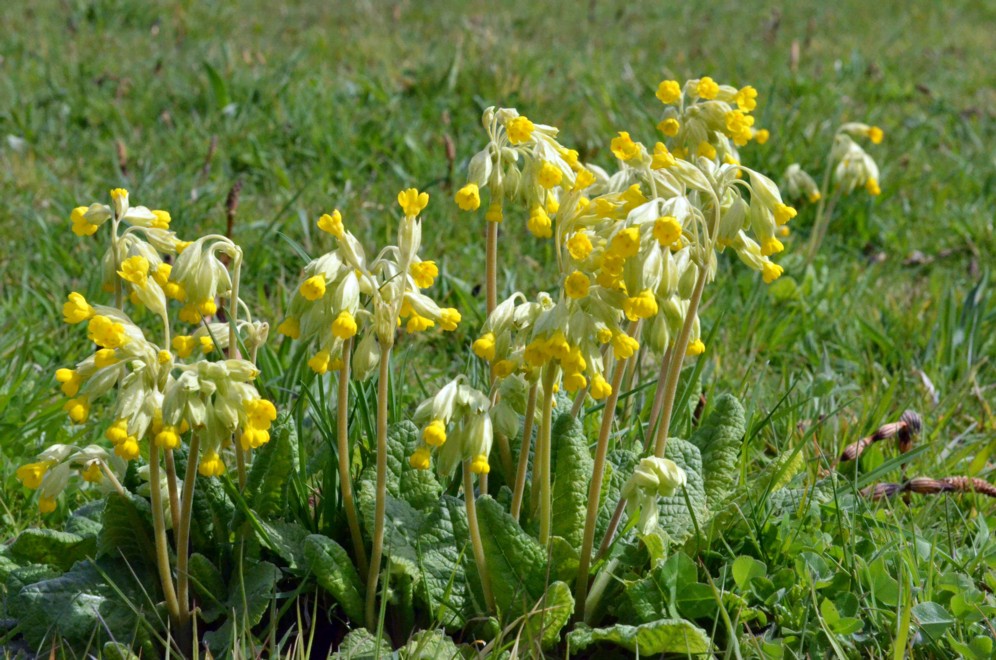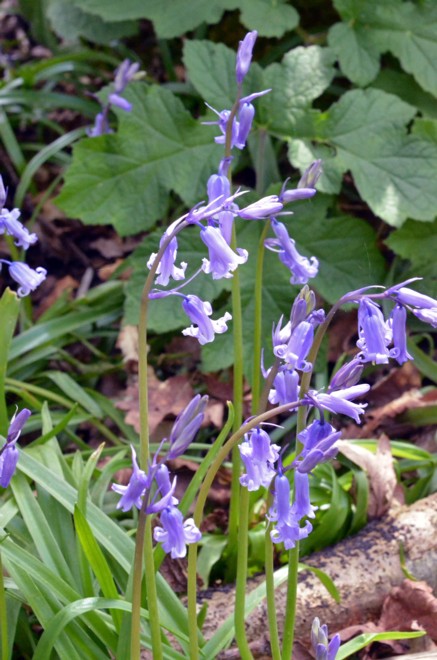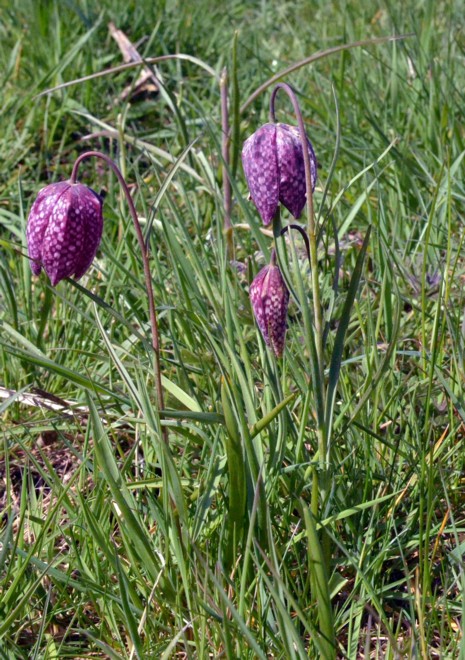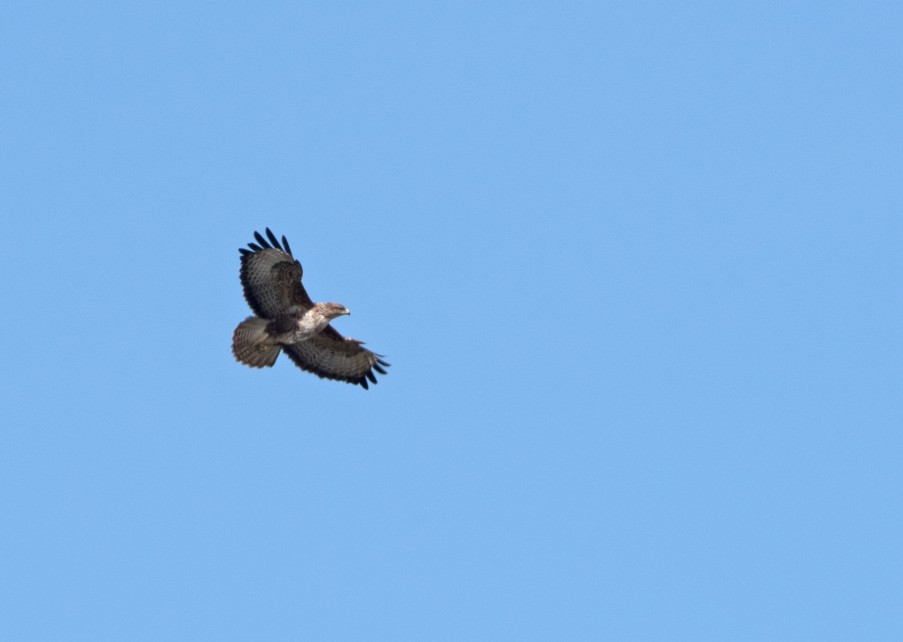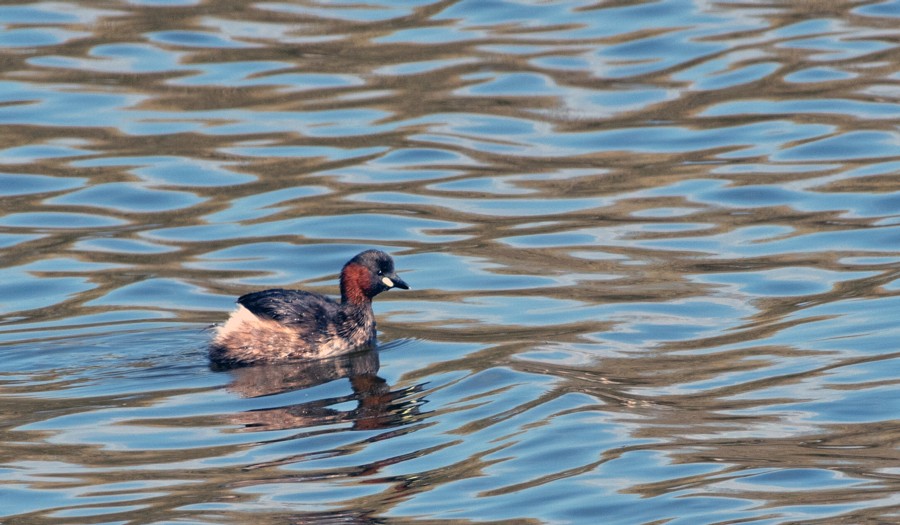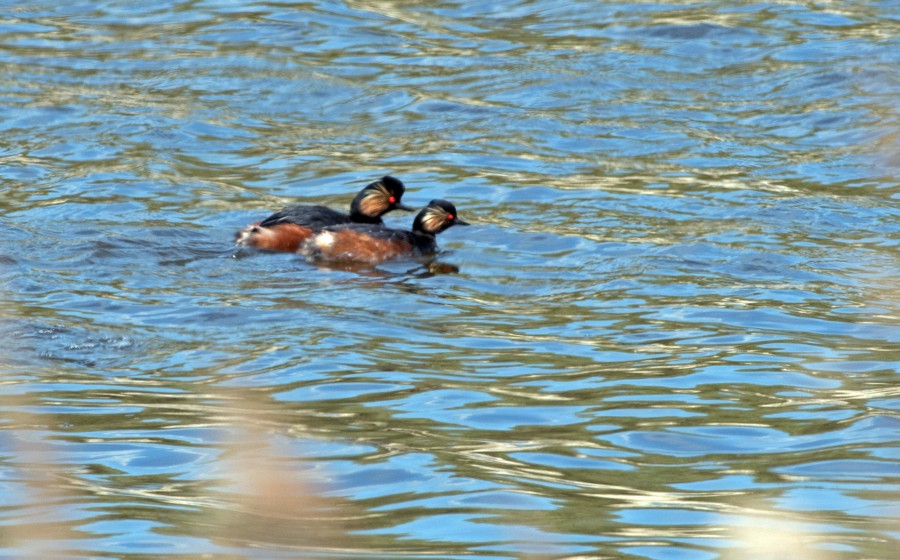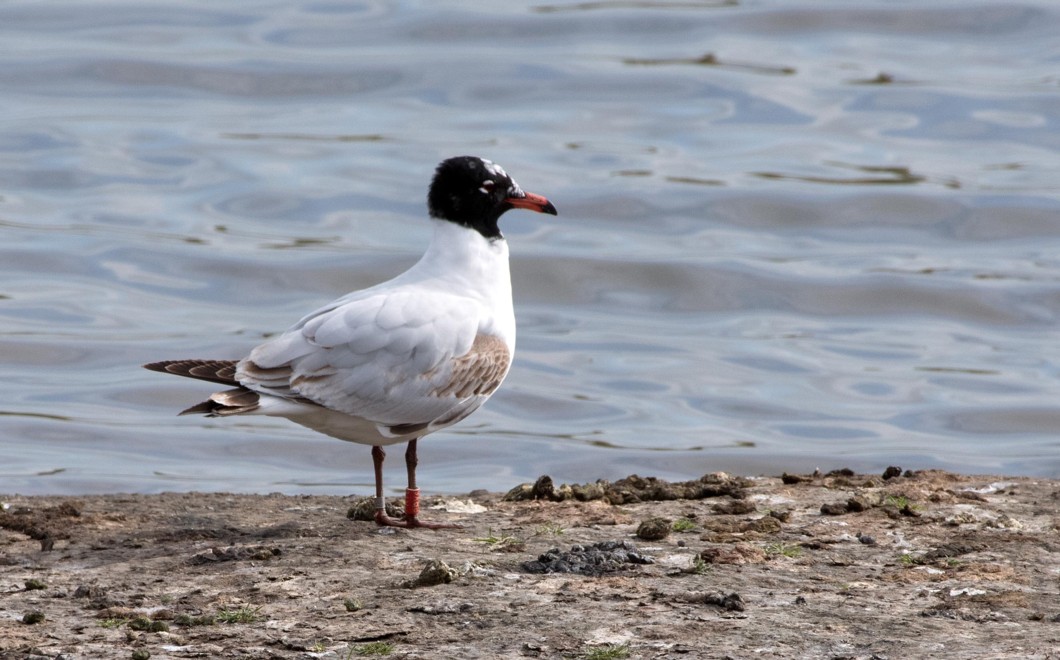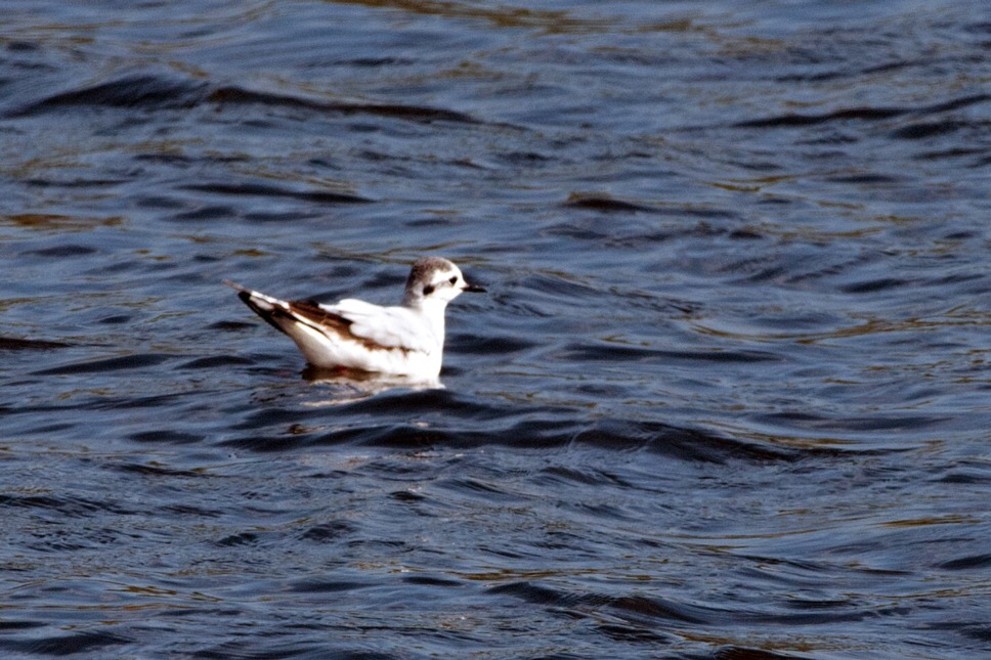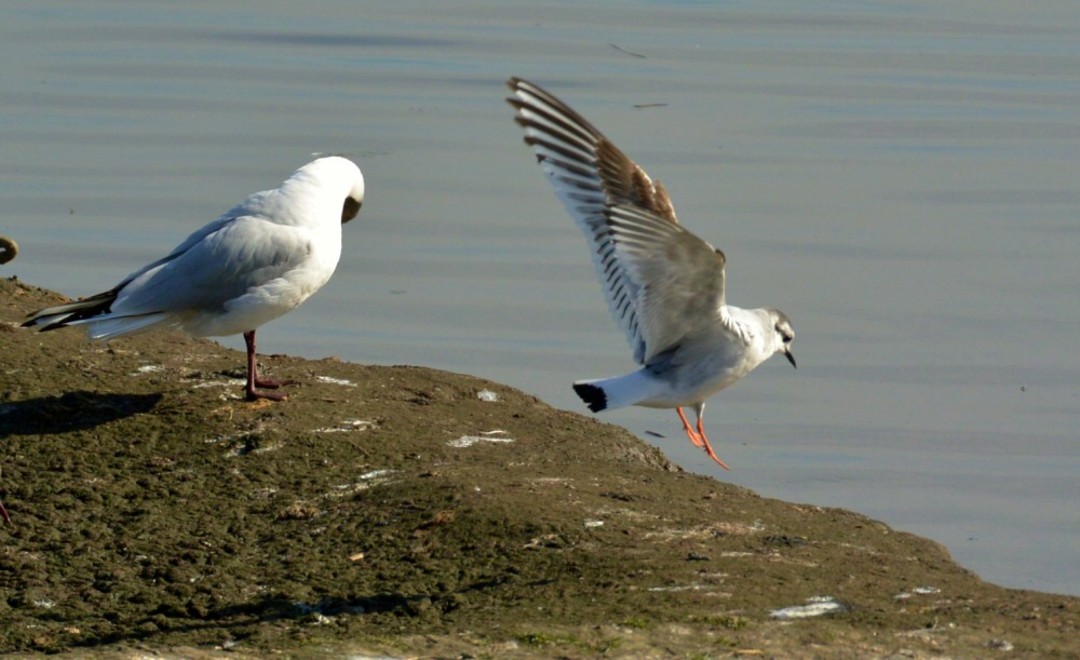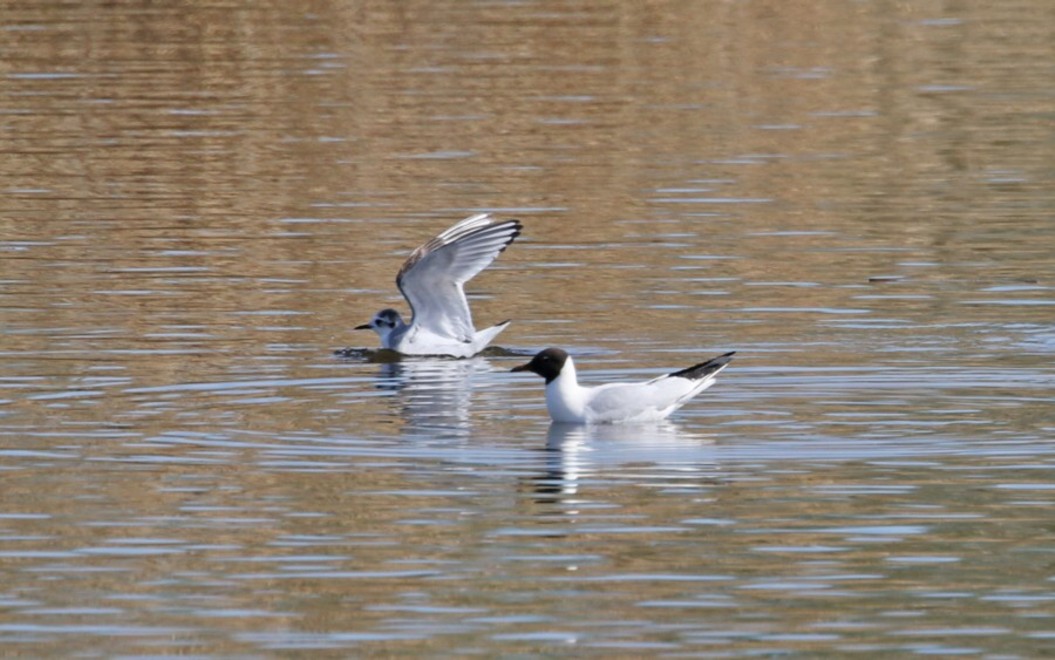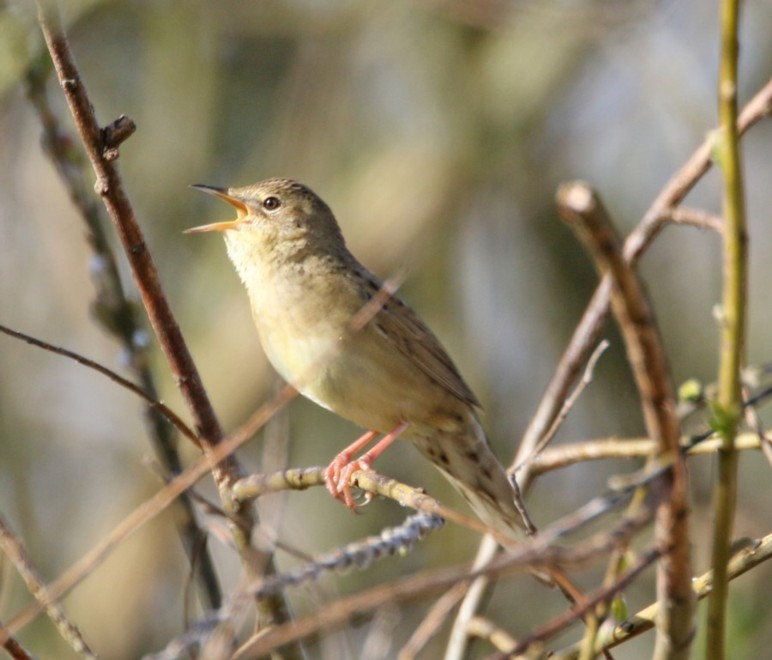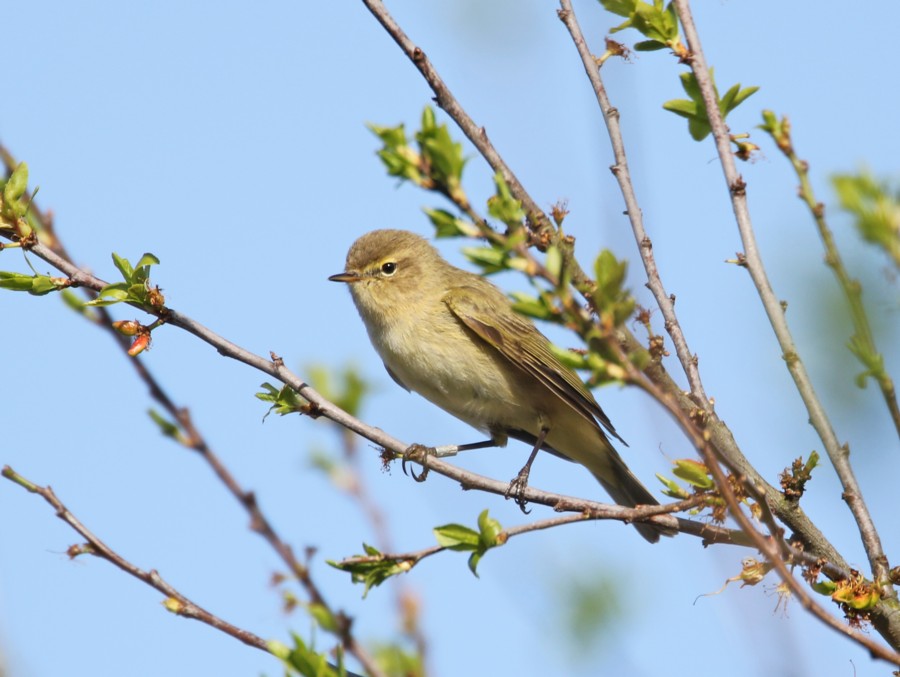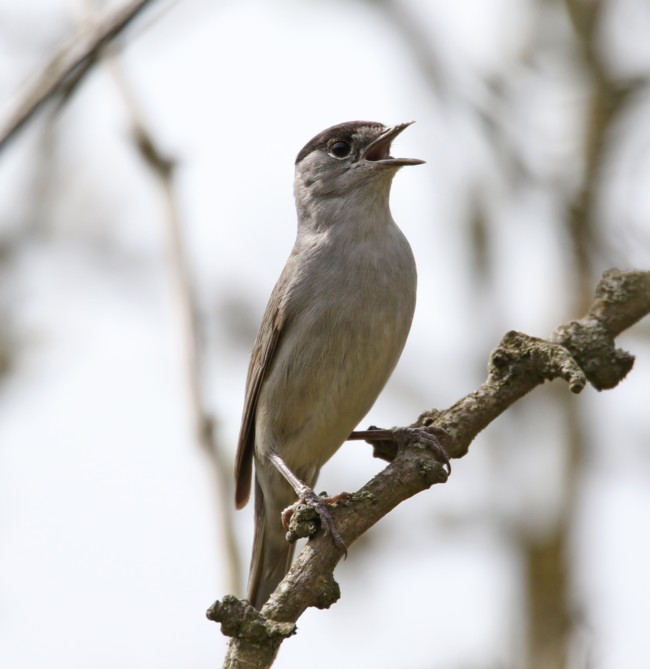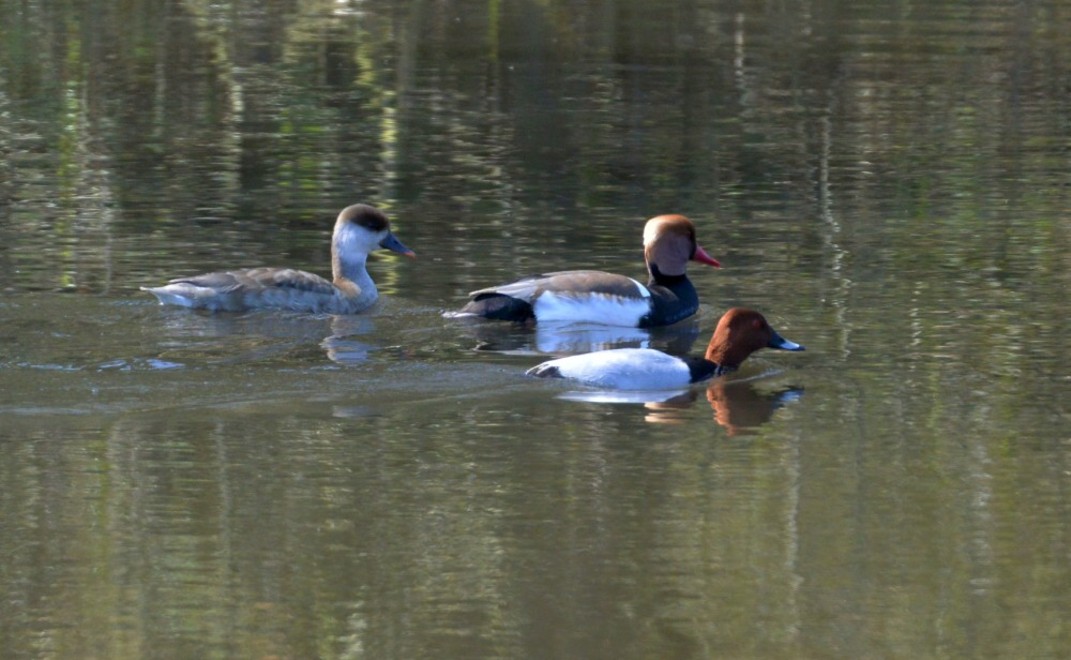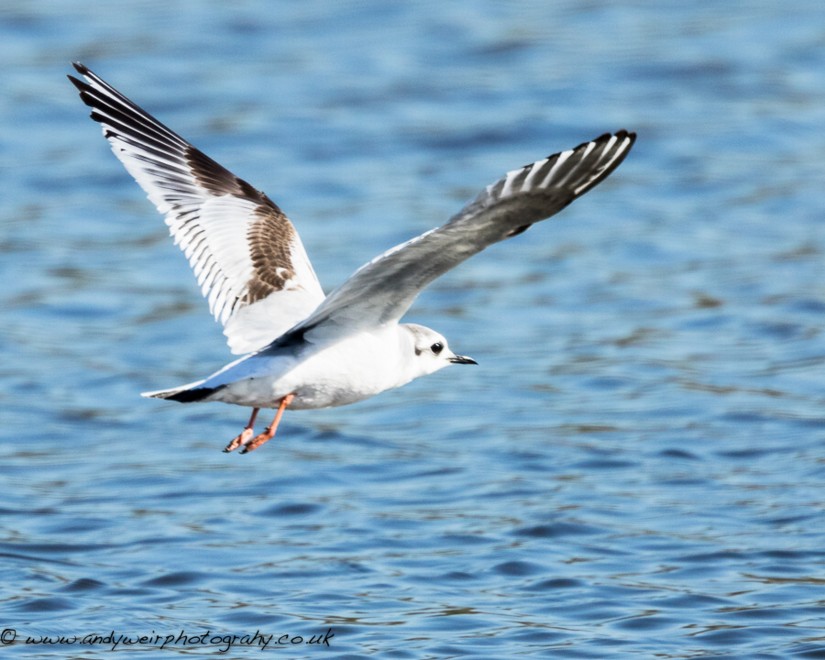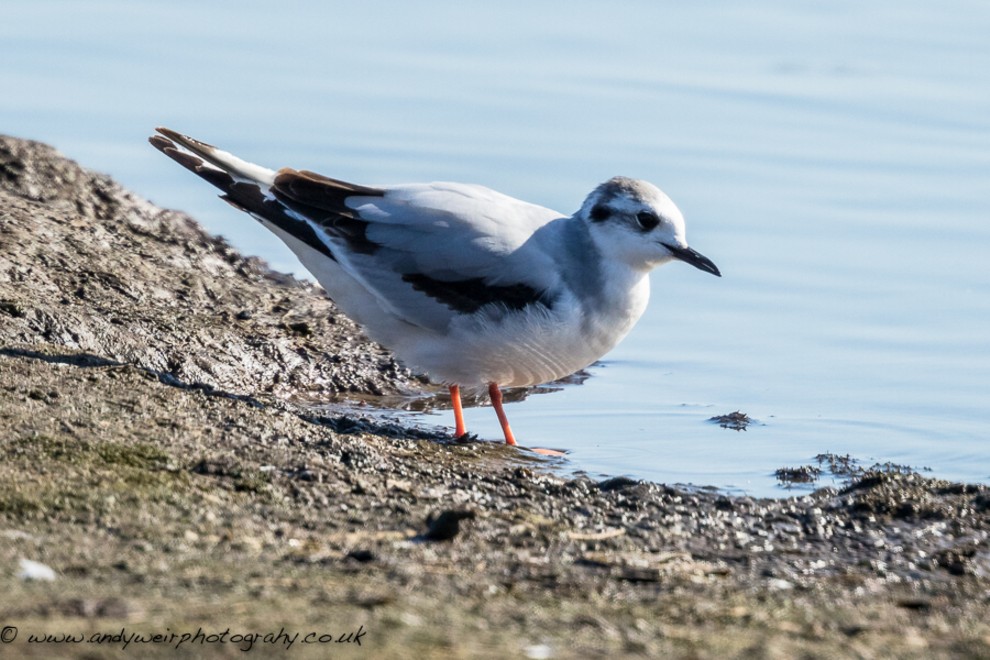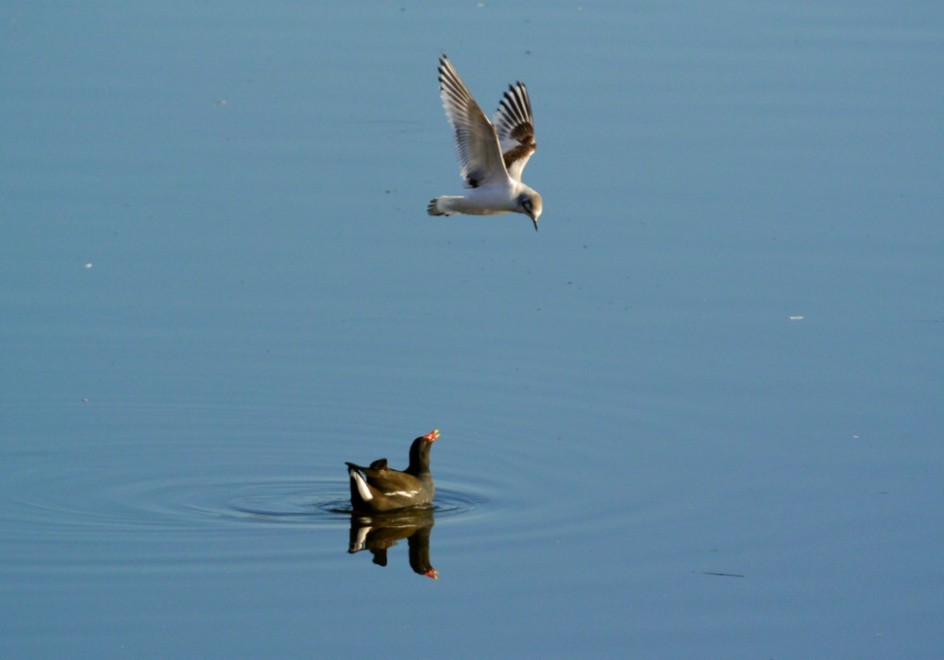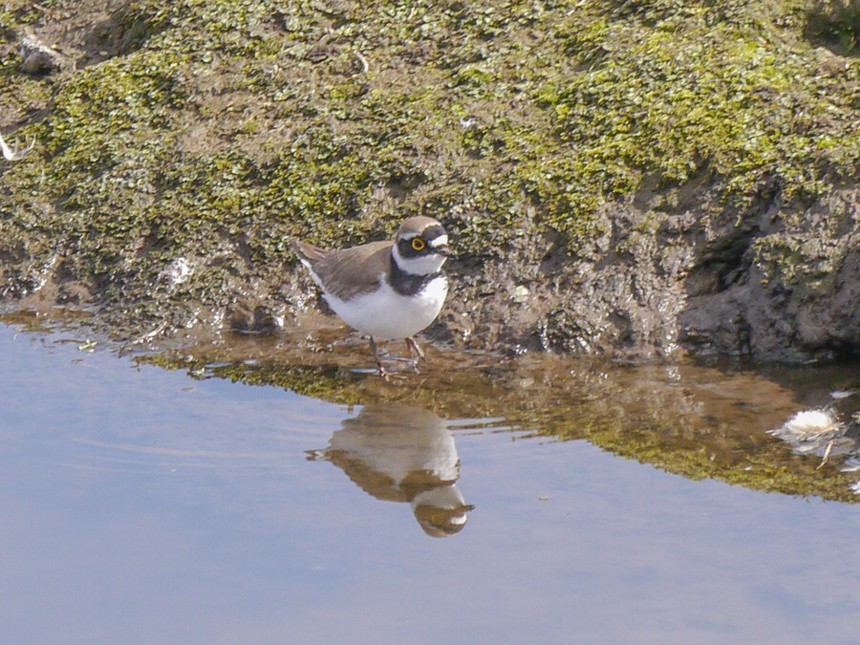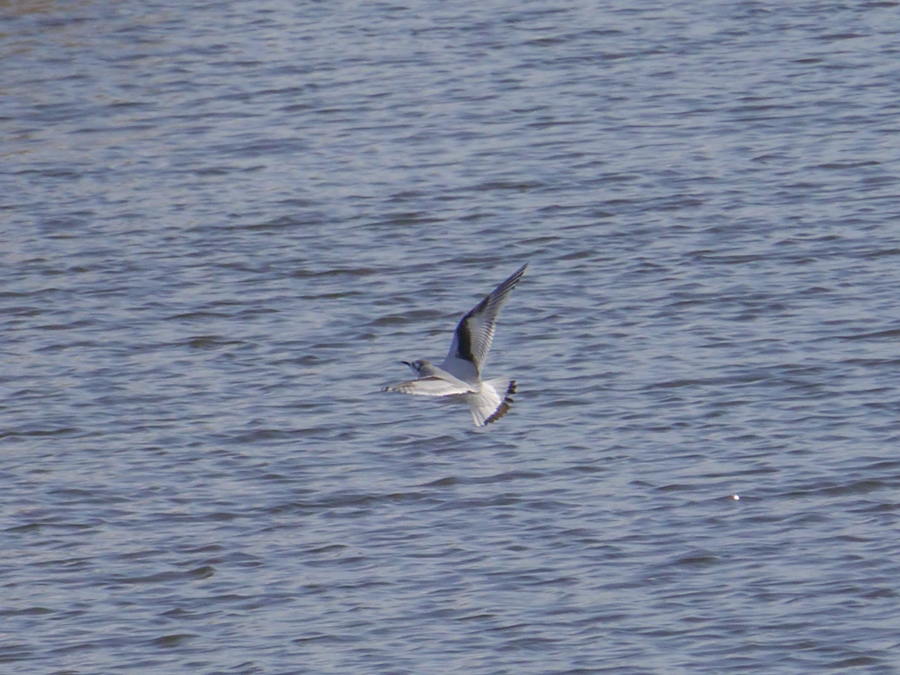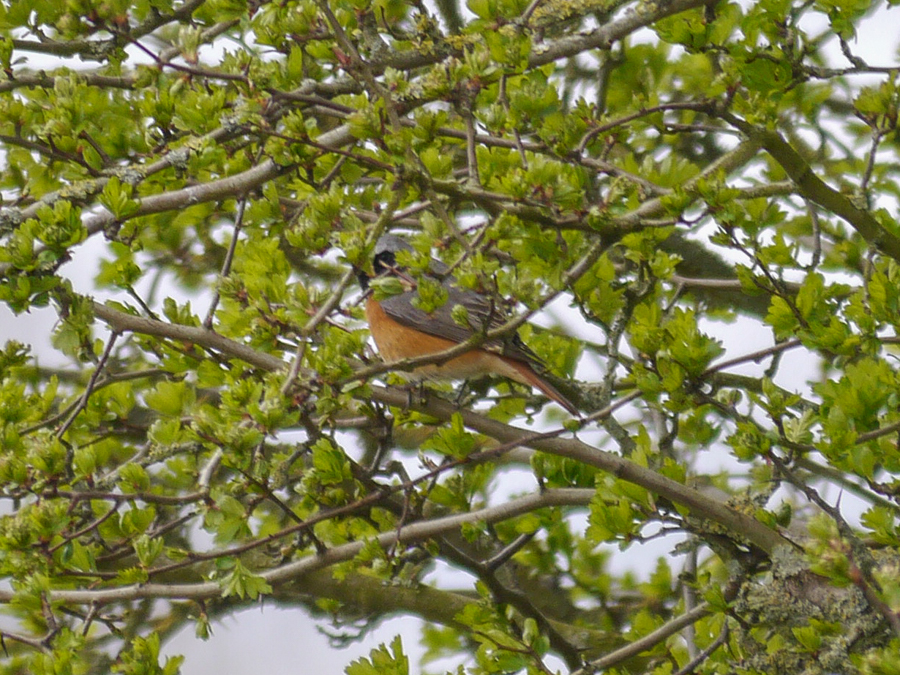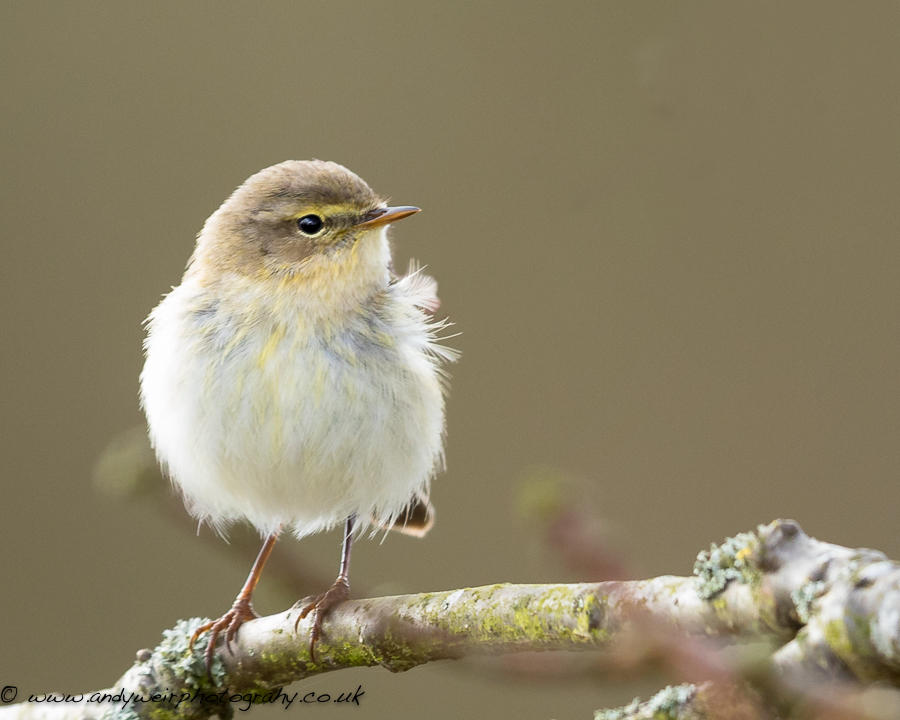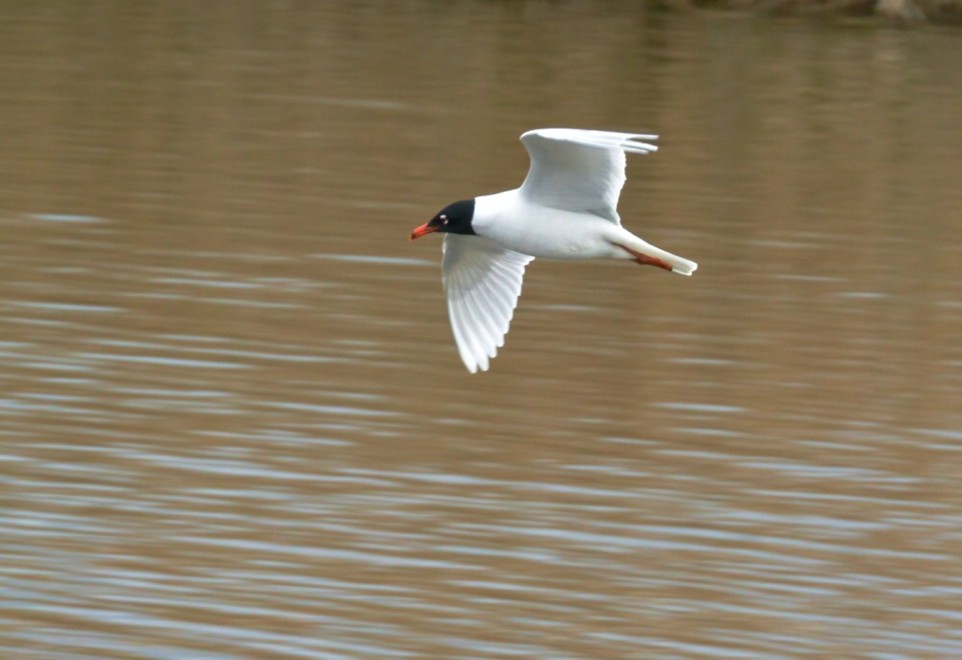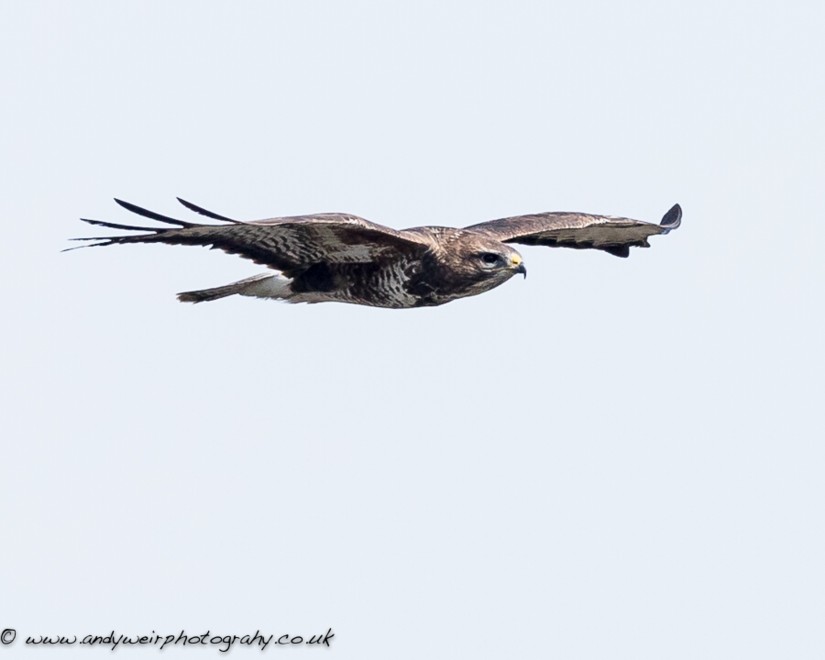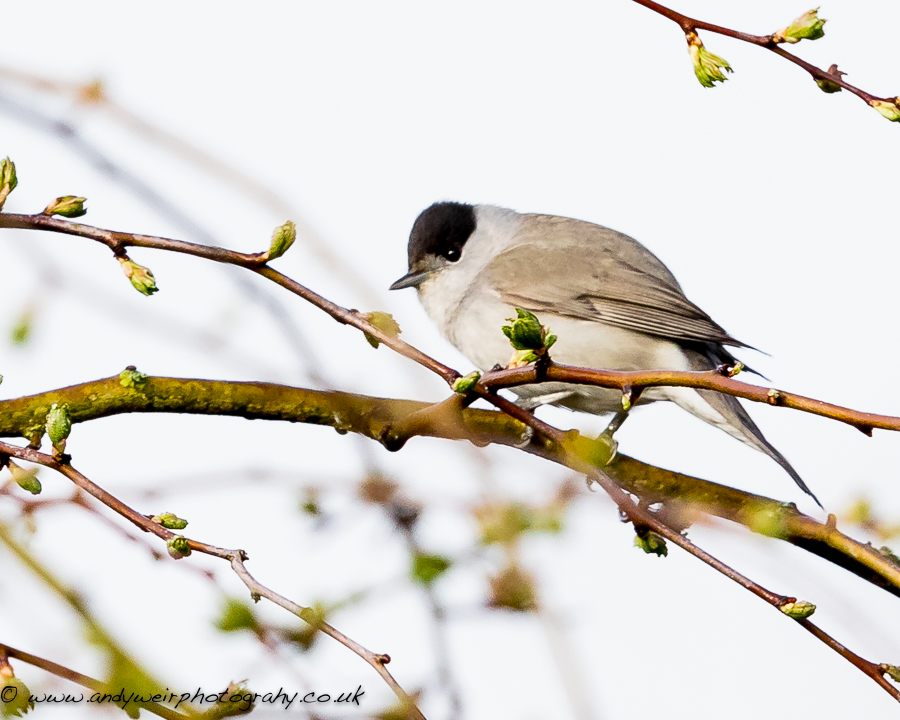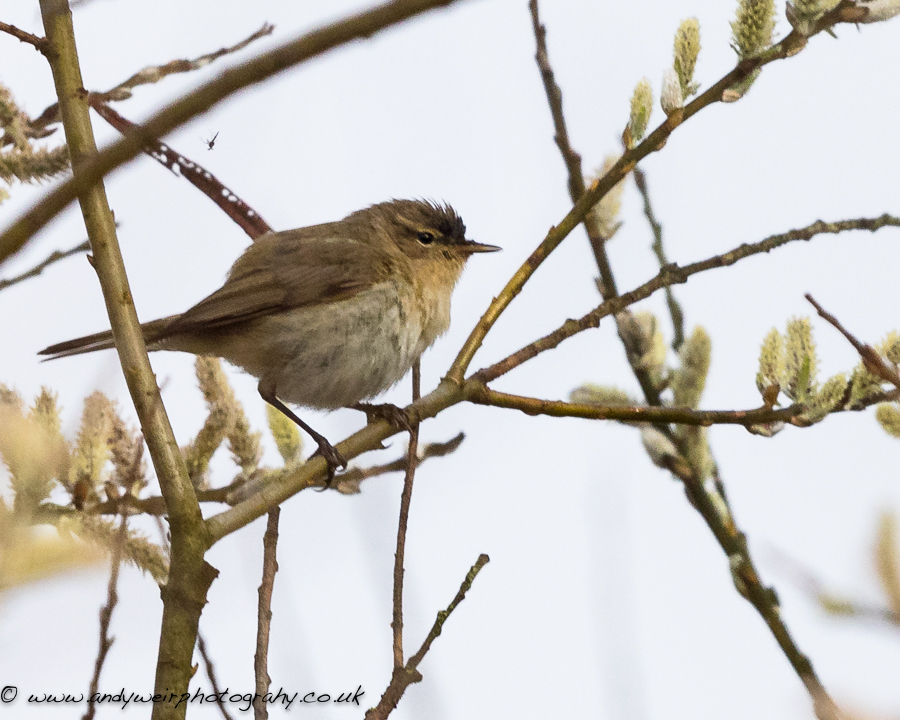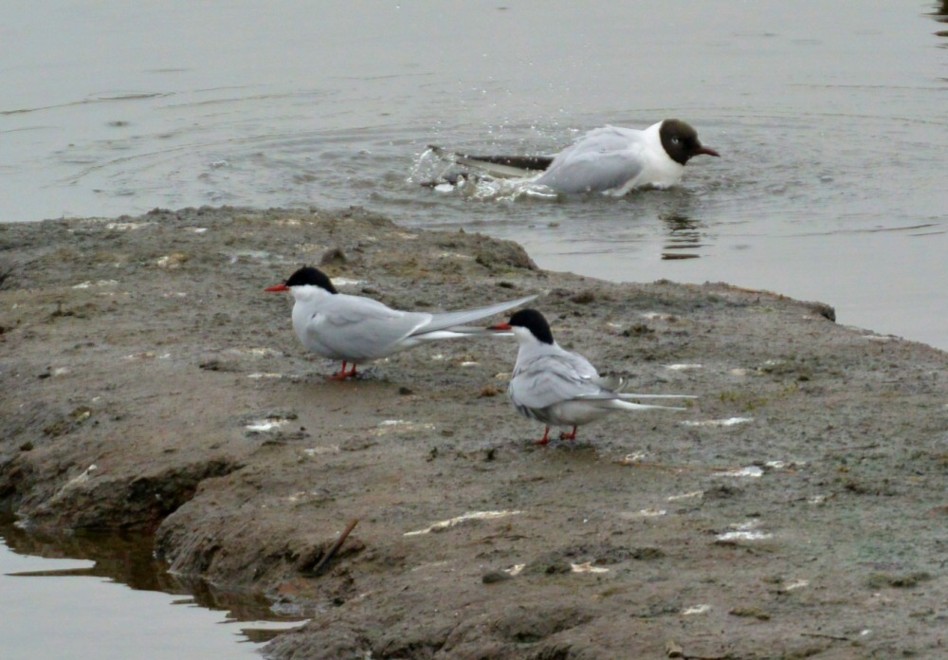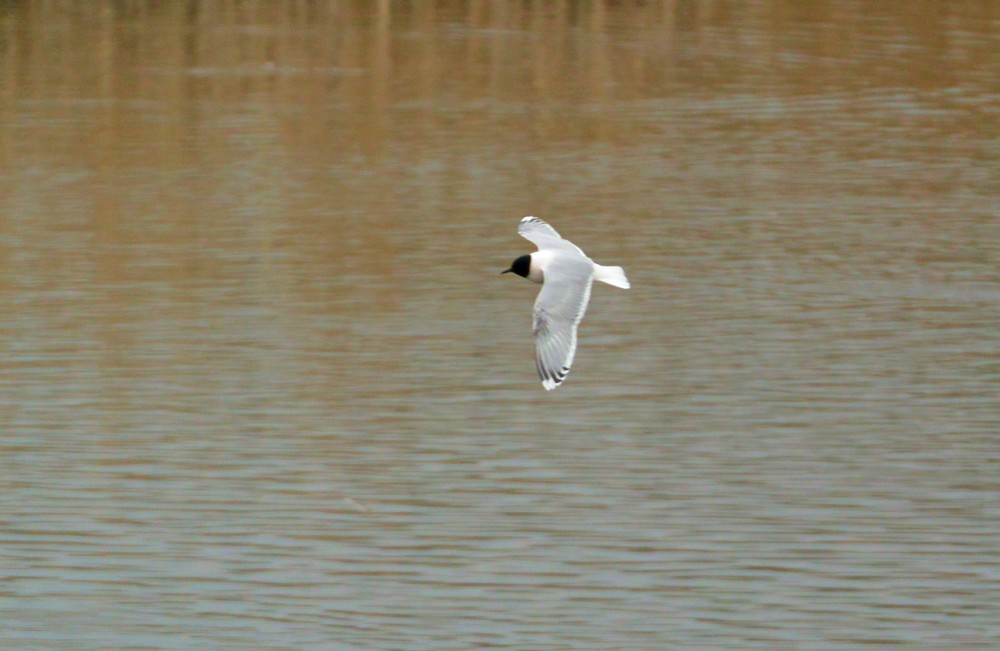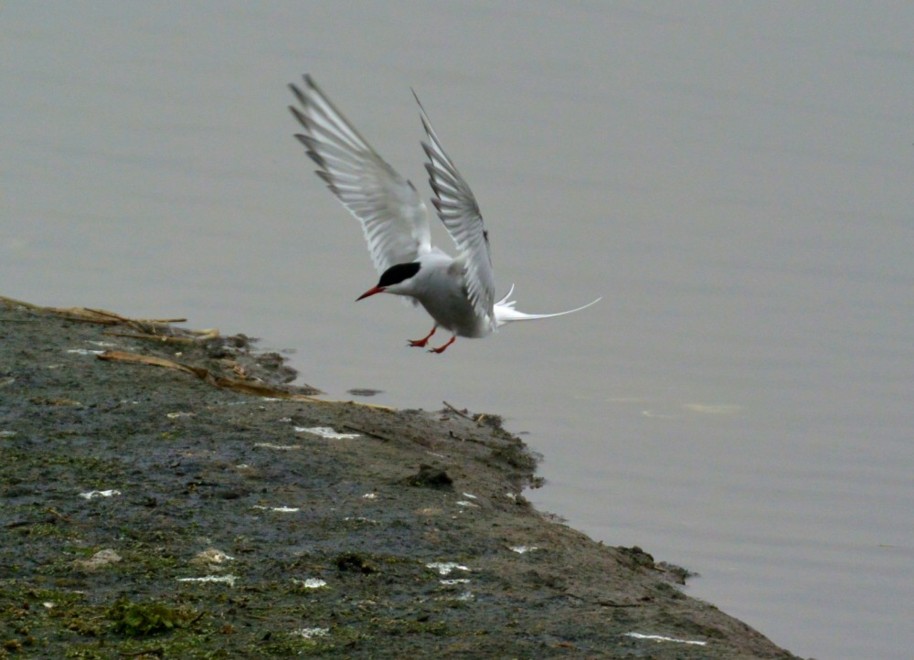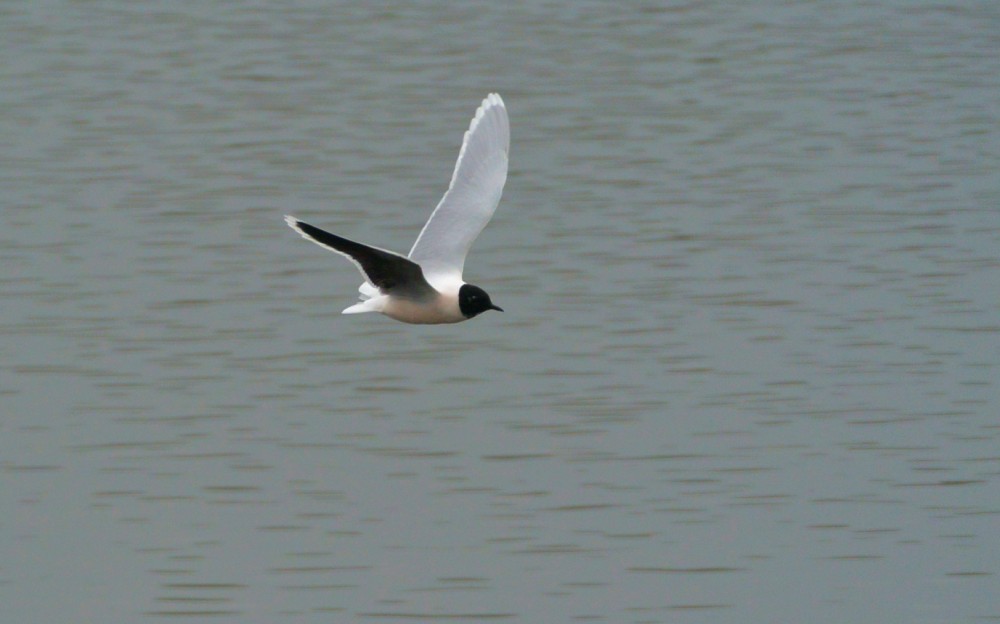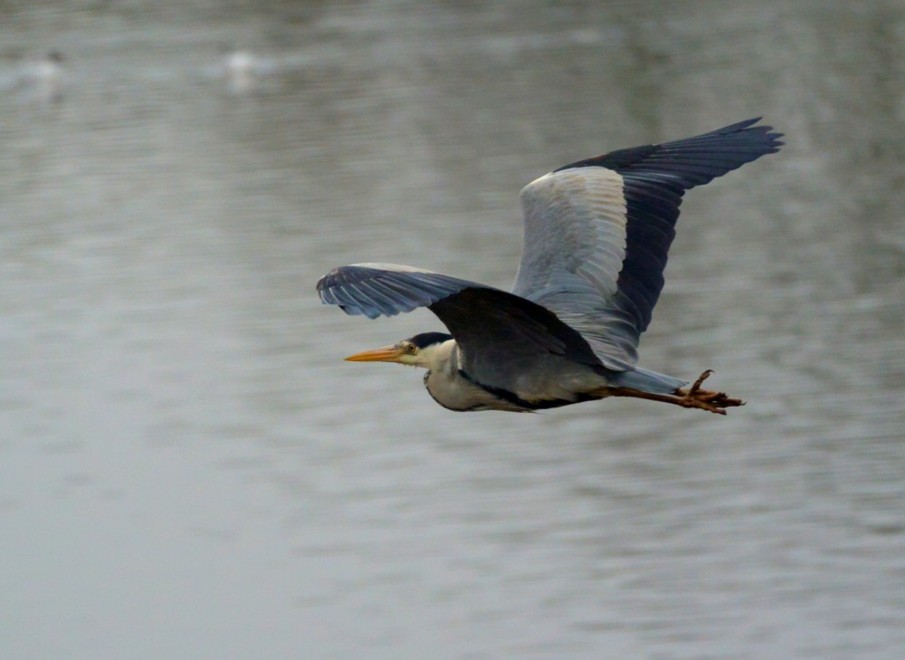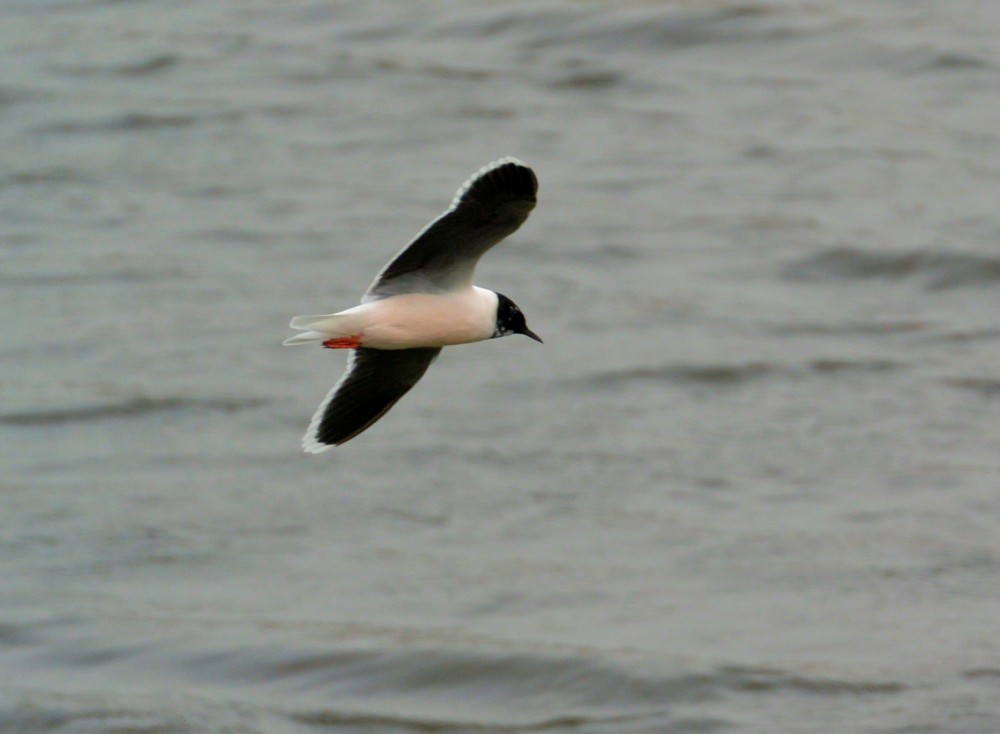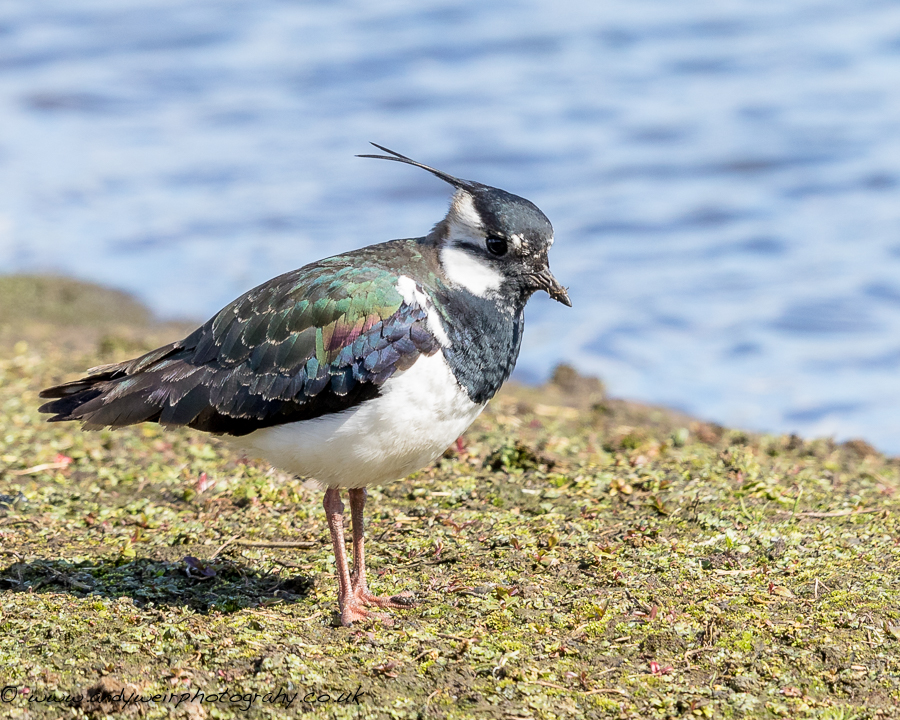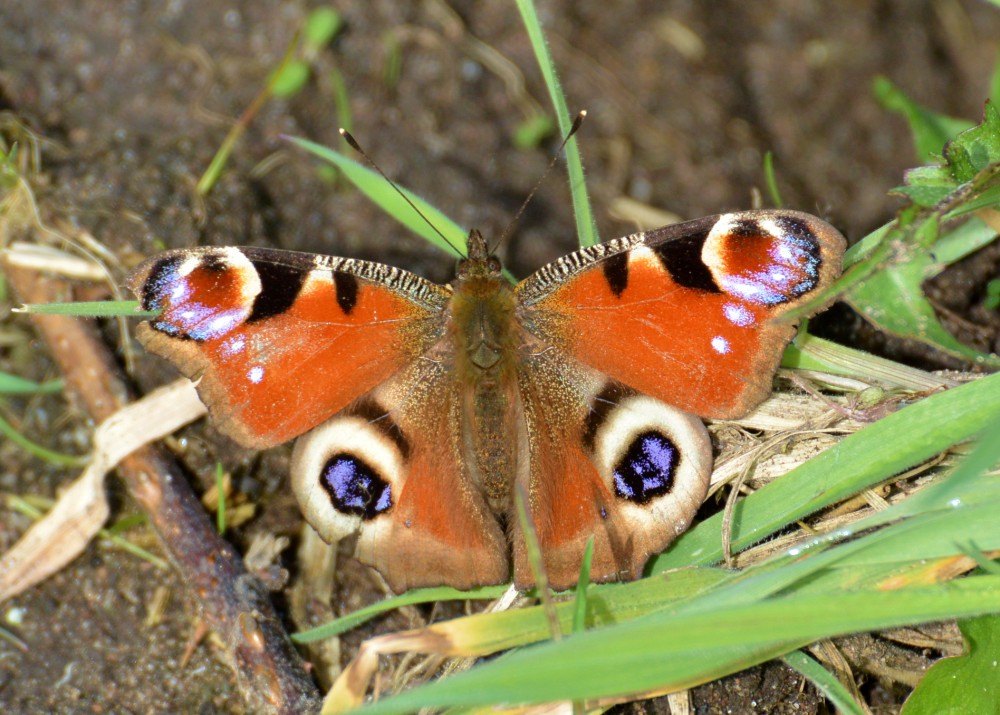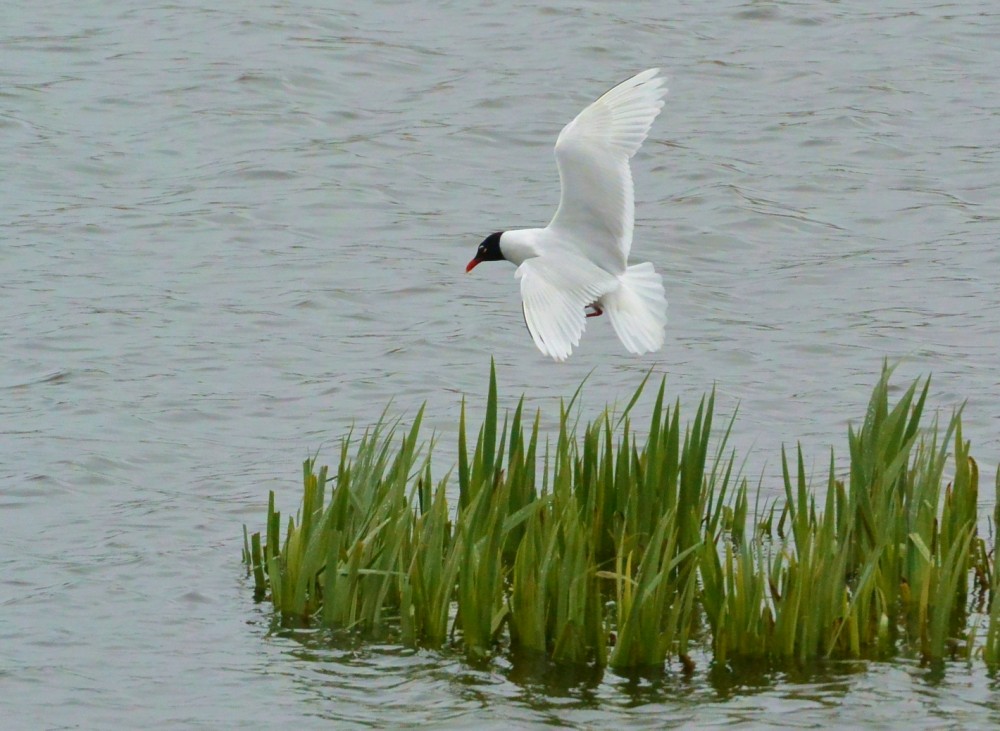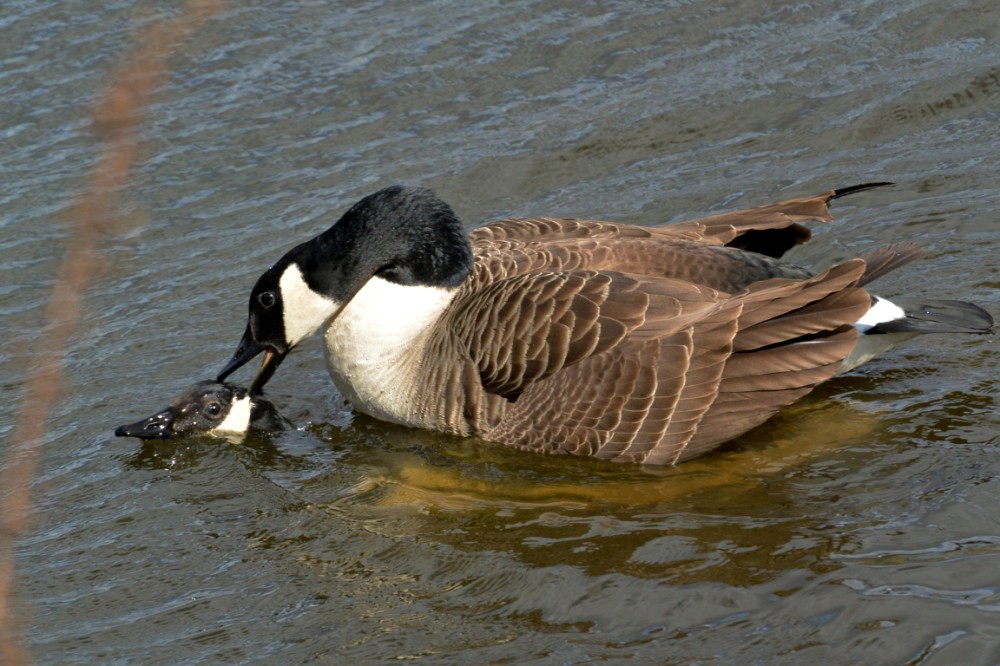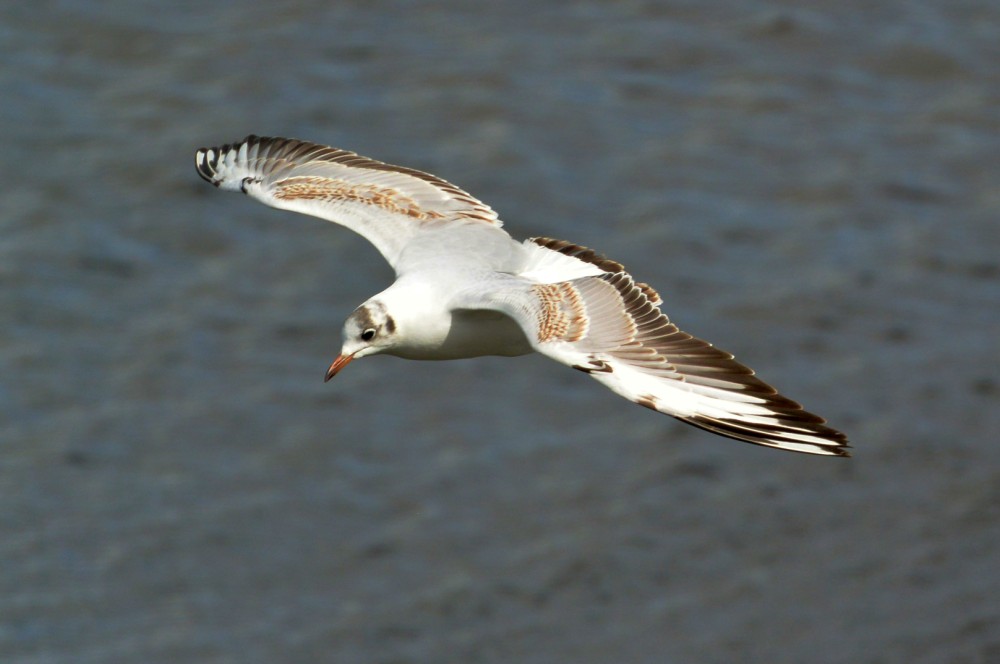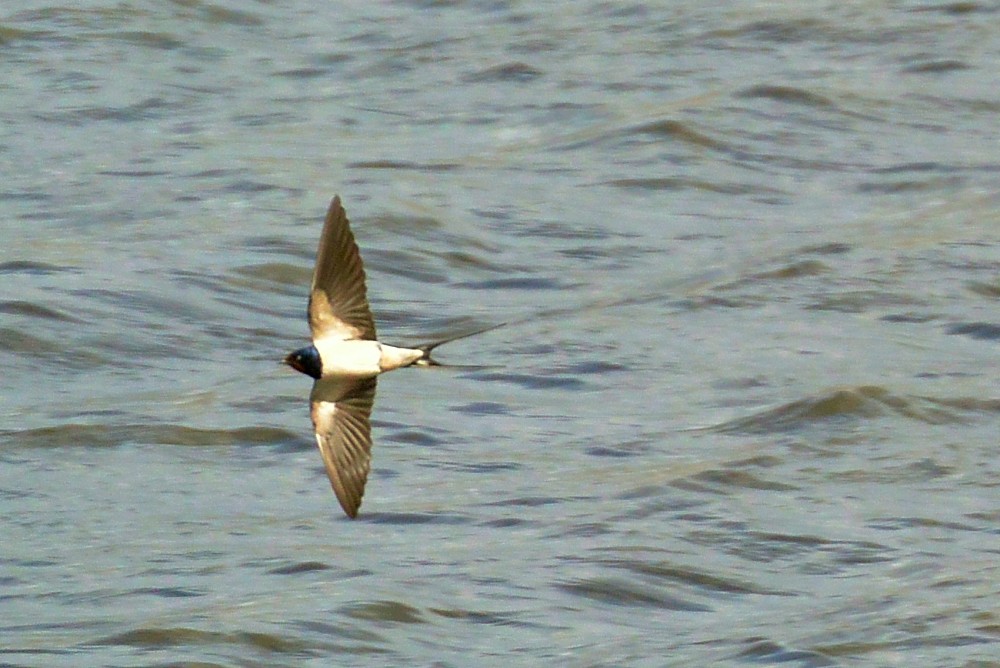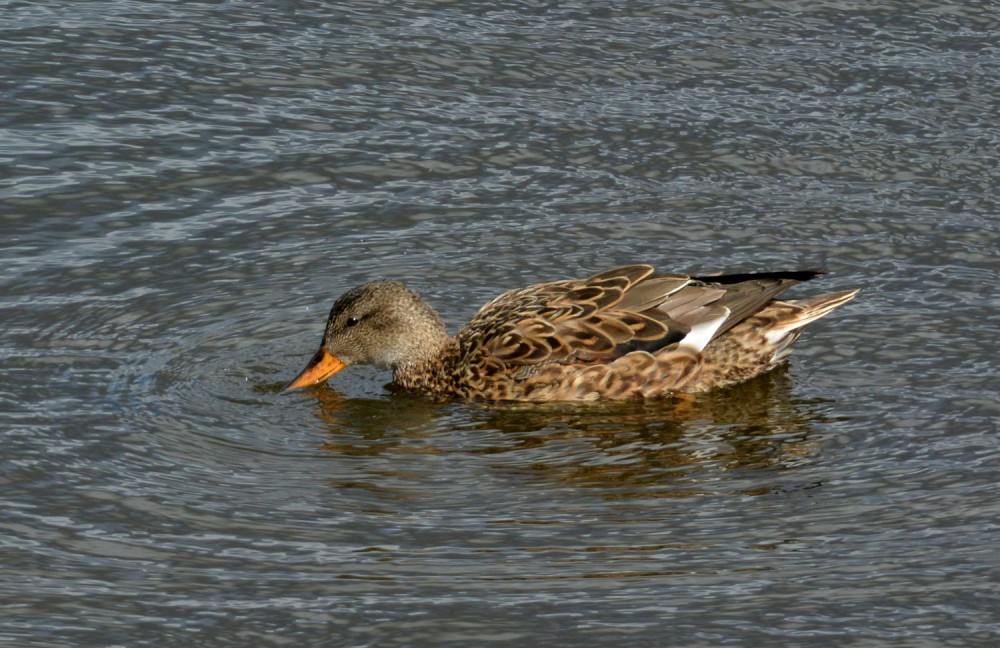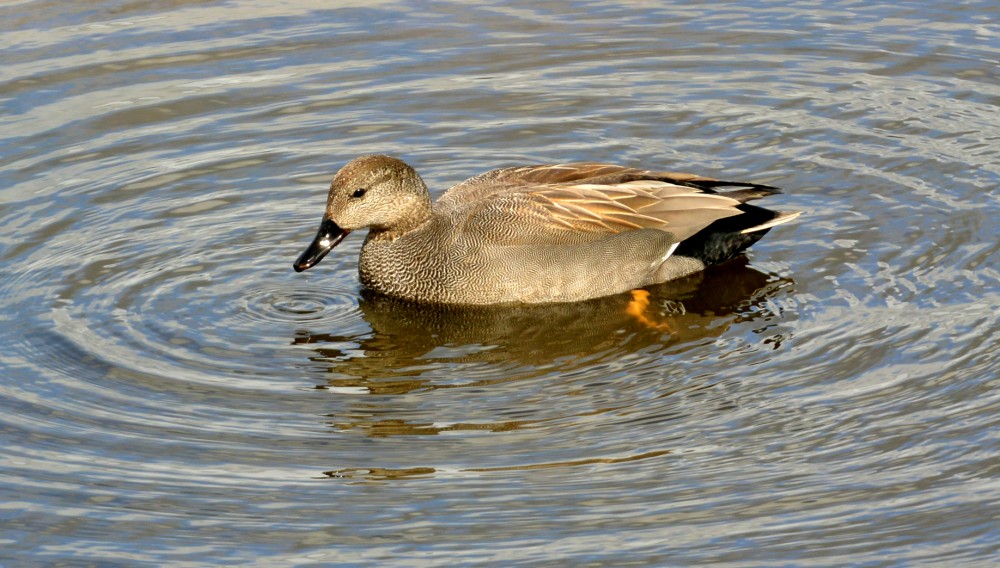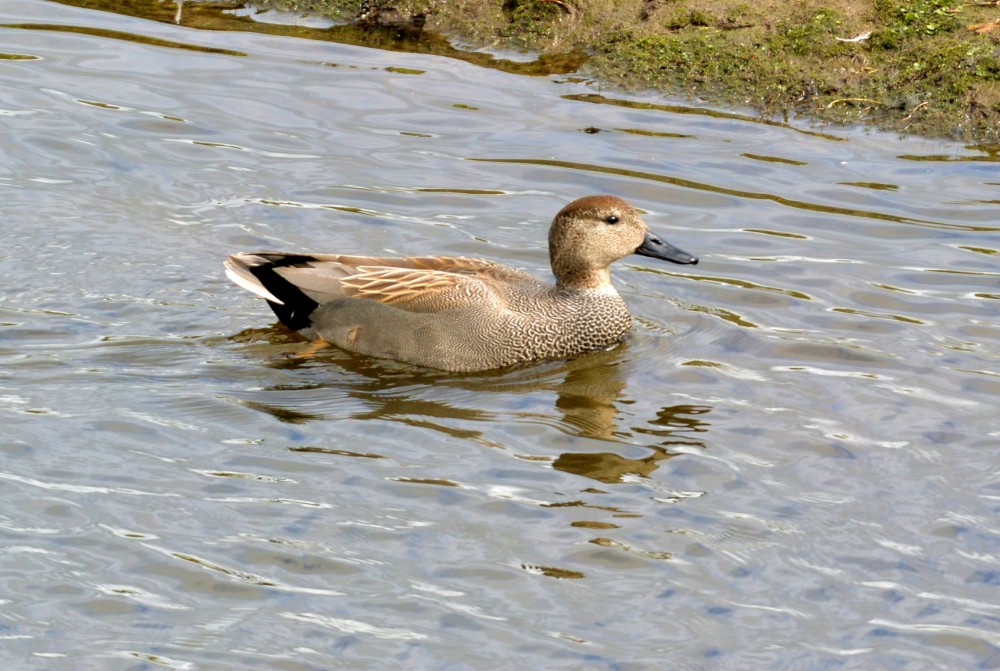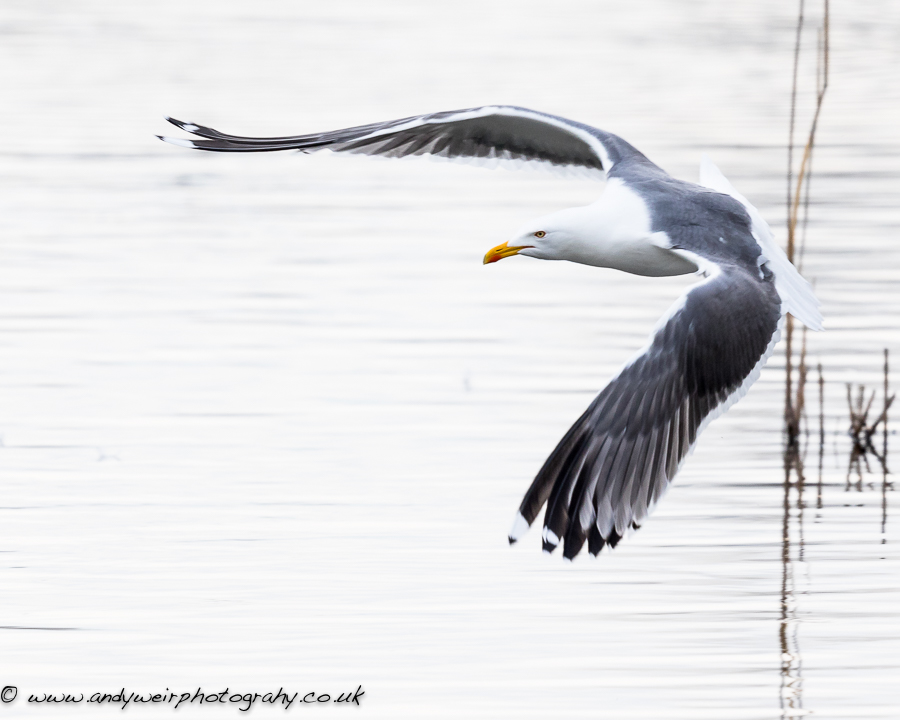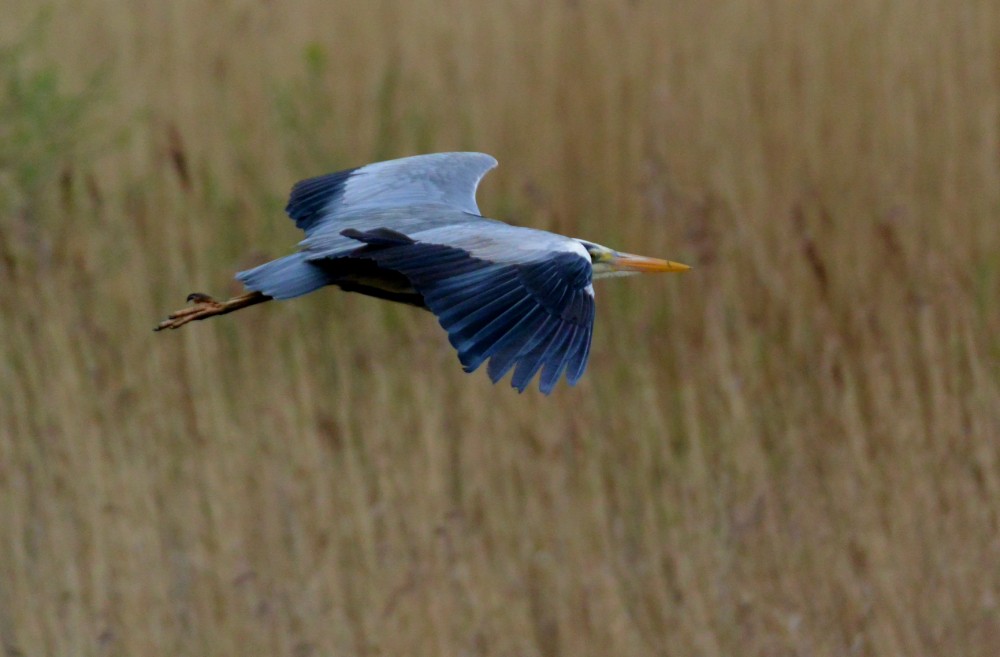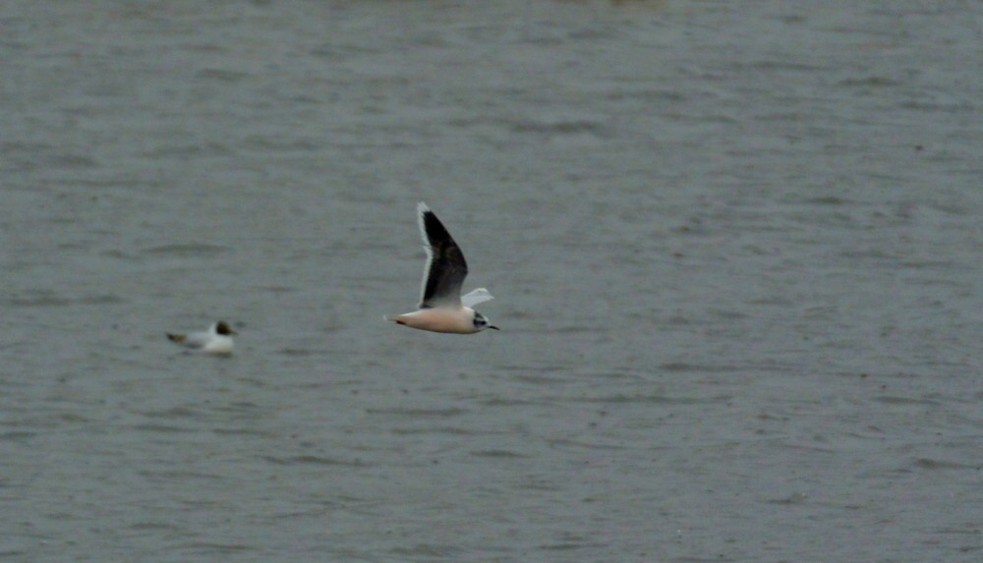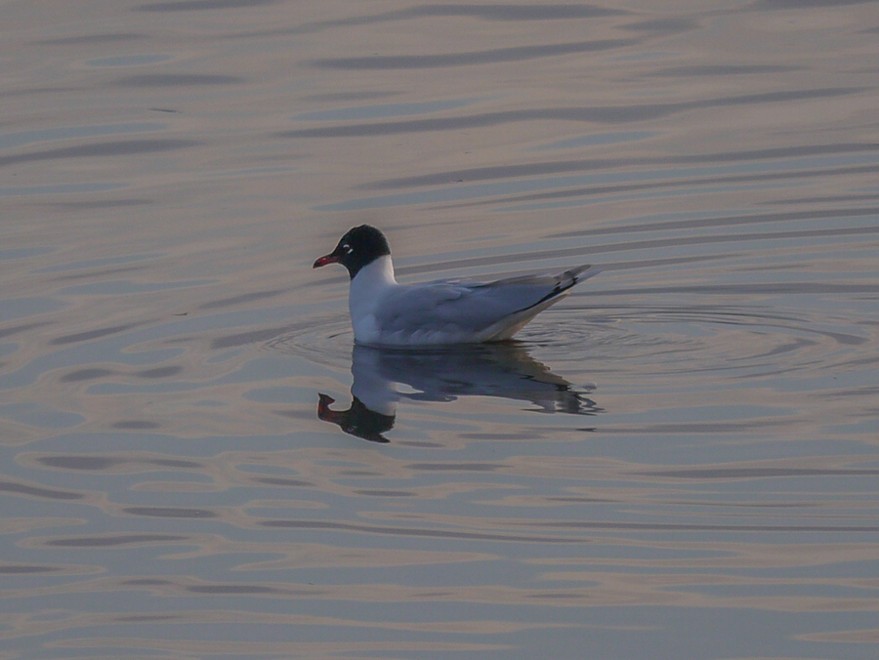Woolston Eyes Monthly Sightings
2016-04-30
Well, all days birding at Woolston Eyes are good days but some are truly great days……and this was one of them. Started with a nice Grasshopper Warbler ringed by Kieran Foster et al. Then an understated text from Mike Miles …” bird in the net, could be White-crowned Sparrow….opinions on the ID welcome”. Mad, adrenalin-fuelled dash to the Obs. Turned out to be a spanking White-crowned Sparrow, a second year bird in pre-nuptial moult, decided by the retention of some brown feathers in the black parts of the crown. Then the logistics of trying to make sure that as many people as possible got to see the bird. All the people who came were great, even though not everyone got to see the bird…so thanks. Thanks also for the donations, which raised over £300 for the Reserve. The bird was then seen on and off till 11.45 in a bush right by the Morgan Hide, where it was released. Then seen to fly a little further away into cover and not relocated. We’ll see if we can re-find it tomorrow and let people know. Bit of “after the Lord Mayor’s Show” but other birds included: Hobby, Spotted Flycatcher, Dunlin, Common Sandpiper, 15 Black-necked Grebes, Cetti’s Warbler, 3 Swifts and more than 300 House Martins. Cheers David Bowman (with David Spencer, Kieran Foster, Mike MIles, Alan Warford, Paul Hazlehurst, Brian Baird, Helen Allan, Diane Shepherd and George Dunbar)
Submitted by: David Bowman
2016-04-29
Despite the poor weather conditions this morning the Marsh Harrier was still hunting over No.3 bed. There was no sign of the Dunlin on the scrape but one flew north across the bed a c9:30. Around lunchtime John Barber reported 2 Common Sandpipers and 2 Mediterranean Gulls.
Submitted by: David Spencer
2016-04-28
A Little Egret flew in this evening and spent 10 minutes on the scrape before heading off east over no.2 bed. The Dunlin was still on the scrape but flew off north when it was harassed by the egret.
Submitted by: David Spencer
2016-04-28
Photo of a Greylag Goose with young from this morning
Cheers David
Submitted by: David Bowman
2016-04-28
Photo of Greylag Geese with young from No.3 bed this morning
Cheers David
Submitted by: David Bowman
2016-04-28
An excellent morning on No.3 bed, starting with two Mediterranean Gulls, then with Dunlin, Common Sandpiper and Oystercatchers dropping onto the Morgan Hide scrape and 16 Black-necked Grebes in total. Towards lunchtime, we picked up a Marsh Harrier, dropping in and then, perhaps less pleasingly, watched a Mink persistently hunting the reedbed right in front of us. The video clip shows most of the action.
https://www.youtube.com/watch?v=D6vJM422yVg
Cheers David Bowman (with Brian Martin,David Spencer, Alan Warford and Diane Shepherd)
Submitted by: David Bowman
2016-04-27
Mating Ritual
And of course that’s what follows the courtship ritual.
Submitted by: David Mercer
2016-04-27
Courtship Feeding
It was interesting watching the Black Headed Gull courtship ritual.
Submitted by: David Mercer
2016-04-27
I made an early start to carry out a common bird survey on the northern half of No.4 bed. After a frosty start it proved to be a lovely morning. On the transect I counted 10 Willow Warbler, 23 Chiffchaff, 18 Whitethroat, 13 Robin, 15 Wren, 7 Song Thrush, 7 Blackcap and singles of Sedge and Grasshopper Warbler. Heading to Bollin Point I found what I think was a Pink-footed Goose with a group of Greylags. As I could only see the bird at a distance and looking into the sun I could not be certain of the ID. Back on No.3 bed was a Common Sandpiper and the Greylag brood of five first seen on Sunday was down to a single chick as a result of predation by lesser Black-backed Gulls of which four were present. In spite of frantic efforts by one of the adults to keep the gulls at bay the last chick was taken. Another brood of at least four Greylags was in front of the Frank Linley Hide so hopefully they will fare better. A brood of 8 Mallard young was on the river and a second brood of 12 tiny young at Latchford Locks. In spite of the mostly sunny weather very few butterflies were braving the cold but I did see about 6 Small Tortoiseshell, 2 Orange Tip and a Green-veined White.
Submitted by: Dave Hackett
2016-04-27
Yes David that is a Common Sandpiper. I saw possibly the same bird from the south screen. So in little more than an hour the Lesser Black-backed Gulls took 2 Greylag and 1 Coot young. Worse is yet to come I fear! Picture of a 2nd summer Mediterranean Gull which was roosting on the ridges early morning.
Submitted by: David Spencer
2016-04-27
Common Sandpiper
Am i correct in saying this is a Common Sandpiper?
Submitted by: David Mercer
2016-04-27
Greylag Chick
I am saddened to report that shortly after this picture this little cute chap succumb to the wrath of a Lesser Black-Backed Gull.
Submitted by: David Mercer
2016-04-26
This evening’s heavy hailstorm brought in an adult Kittiwake. Unfortunately it headed north and couldn’t be relocated.
Submitted by: David Spencer
2016-04-26
Another 1st summer Little Gull this morning, at least 2 adult Mediterranean Gulls and 12 Black-necked Grebes.
cheers
David (with B Martin)
Submitted by: David Spencer
2016-04-25
One Red Kite was seen this morning. Initially it was seen flying south, low over No.2 bed and was thought to have flown south. However it reappeared circling high with two Buzzards over the SE corner of No.3 bed. Also present was one female/imm. Marsh Harrier (a different individual to the one seen on Saturday). Two adult Mediterranean Gulls were again seen in the Black-headed Gull colony. Of interest last week’s colour ringed 1st summer Med Gull(red PRY6, see Chris Monk’s photo below )was ringed in Poland as a nestling on 20th June 2015. Also last week, the adult summer Med Gull reported by Harry Abbot with a white darvic ring, E718, is a Dutch bird ringed as a nestling in June 2012. Since then it has been seen in Germany and Ireland; the last report was on 21st January2016 at Bray Harbour, Wicklow.
Cheers David (with D Bowman, B Lloyd and J Verdon)
Submitted by: David Spencer
2016-04-23
With plenty of sunshine and despite a freshening northerly breeze, there was still some evidence of northward passage this morning. An immature male Marsh Harrier was an early find, quartering the reed-bed for an hour or so before flying off, low to the east. This is the fourth Marsh Harrier to pass through this week. The same first summer plumaged Little Gull was active all morning, while the three Mediterranean Gulls were seen well before disappearing into the heart of the Black-headed Gull breeding colony. Warblers included: 2 Cetti’s, 4 Reed Warblers, 2 Sedge Warblers, 3 Whitethroats plus plenty of Blackcaps, Willow Warblers and Chiffchaffs. A Garden Warbler was reported from No.4 bed, though the recently arrived Grasshopper Warblers on No.3 bed weren’t heard. Finally, a single Snipe and a surprise pair of Pintails were found, though there was no sign of yesterday’s two Garganey.
Photo of an Orange Tip butterfly from No.3 bed this morning
Cheers David (with David Spencer, Alan Warford, Dave Steel, Helen Allan and Kelly Ainsworth)
Submitted by: David Bowman
2016-04-22
A pair Snipe hiding in the reeds to the right of the screen by the Sybil Hogg Hide
Submitted by: Chris Monks
2016-04-22
Ramsoms beneath the trees by the end of the footpath from the bridge
Submitted by: Chris Monks
2016-04-21
Little Gull (Hydrocoloeus minutus) and Black-headed Gull (Chroicocephalus ridibundus) No.3 bed
Submitted by: Andy Voisey
2016-04-21
Another productive morning, wandering around in the sunshine started with an early survey of the south bank of the Ship Canal, to see if Willow Tits are still breeding there. Didn’t locate any but found Sedge Warbler and loads of other good birds, including a Common Sandpiper on the Canal. It also gave us an excuse to cross the Canal on the Penny Ferry, which is always a delight. Then onto No.3 bed, where a Marsh Harrier showed well till mid-morning before soaring away to the north-west. The 1st summer plumaged Little Gull was still present, along with Ruddy Duck, Grasshopper Warbler, 18 Black-necked Grebes, Willow Tit and Peregrine plus plenty of butterflies (Brimstone, Orange Tip, Comma, Meadow Brown, Peacock and Small Tortoiseshell).
Photo of the Red-crested Pochards from yesterday.
Cheers David Bowman (with Alan Warford, David Spencer, Brian Baird and John Langley)
Submitted by: David Bowman
2016-04-20
Black-headed Gull (Chroicocephalus ridibundus) from John Morgan Hide
Submitted by: Andy Weir
2016-04-20
In addition to the sightings reported by David Bowman I saw my first Whitethroat and Sedge Warblers of the year and no less than 18 Black-necked Grebes on No.3 bed. Although butterfly numbers were still low for mid-April I was fortunate to find 2 Brimstones and my first sightings of Orange Tip, Speckled Wood and Green-veined White, together with increasing numbers of Small Tortoiseshell (25 plus 7 along the river) and Peacock (22 plus 4 on the river)
Submitted by: Dave Hackett
2016-04-20
Another stunning spring with new birds turning up all the time. Highlights were 2 Red-crested Pochard on the Mersey just to the east of Woolston Weir (found by Dave Hackett), a drake Garganey past the No.3 bed footbridge (found by John Barber but may have been the bird we glimpsed briefly, earlier, in front of the Morgan Hide), another Little Gull, our 13th in the past couple of weeks (this time a 1st summer bird), 2 adult Mediterranean Gulls, a female Ruddy Duck, 14 Black-necked Grebes and a Grasshopper Warbler (reported from No.1 bed by John Blundell). There’s still plenty more to come, though, with only a sprinkling of Whitethroats, Sedge Warblers and Reed Warblers yet arrived.
Photo of the Little Gull mobbing a Moorhen.
Cheers David Bowman (with David Spencer and Brian Martin)
Submitted by: David Bowman
2016-04-19
One immature Little Gull from the John Morgan hide this morning. Yesterday an adult and immature were reported. Also today, 1 Little Ringed Plover and 2 Great Black-backed Gulls.
Submitted by: David Spencer
2016-04-18
A male Redstart was in bushes bordering the winter feed area this morning. Unfortunately it was rather camera shy! Also of note was a Whitethroat singing near the John Morgan hide.
Submitted by: David Spencer
2016-04-18
Here’s a link to a bit of video showing some of the scarcer birds which passed through during the past week. They include: both adult and 2nd Summer Little Gulls, Common and Arctic Terns, Ring Ouzel and Mediterranean Gull - oh, and a Common Sandpiper thrown in for good measure. All were taken on No.3 bed, except for the Ring Ouzel, which was on No.4 bed.
https://www.youtube.com/watch?v=Iieya879w_M
Cheers David Bowman
Submitted by: David Bowman
2016-04-17
A walk through the northern section of No.1 bed found 3 Little Ringed Plover in suitable breeding habitat. Willow Warbler and Chiffchaff were singing and my reserve-wide total for Chiffchaff now stands at 107 of which all but two were singing males. Back on No.3 bed a pair of Mediterranean Gulls was visible from the John Morgan Hide and Black-necked Grebes totalled a minimum of 11 and probably 13. A few butterflies were out including Peacock, Small Tortoiseshell, Comma and Small White.
Submitted by: Dave Hackett
2016-04-17
Here’s a link to a brief video of the male Ring Ouzel on No.4 bed earlier this week.
Click here to view the video……
or cut and paste the link into your browser https://www.youtube.com/watch/v=sIhwsf6WnIE
Cheers David
Submitted by: David Bowman
2016-04-16
Another solid day’s birding, with bright sunshine moderated by a cool north-westerly breeze. We started and finished on No.3 bed but completed two full Common Bird Surveys, on Nos.1 and 2 beds, in between. Highlights were: 1 Mediterranean Gull, 12 Black-necked Grebes, 1 female Ruddy Duck, 2 Cetti’s Warblers, 1 Sedge Warbler, 1 Reed Warbler, 1 Whitethroat (per Kieran Foster), 12 Blackcaps, 16 Willow Warblers, 51 Chiffchaffs, 25 Swallows, 1 House Martin, 55 Sand Martins, 2 Kingfishers, 1 Peregrine, 5 Sparrowhawks, 3 Kestrels and 14 Buzzards.
Photo is of an adult Mediterranean Gull from No.3 bed today.
Cheers David Bowman (with Dave Steel, David Spencer, Alan Warford, Brian Baird, Helen Allan, Diane Shepherd, Les Jones and George Dunbar)
Submitted by: David Bowman
2016-04-14
Woolston Eyes is represented on the Steering Group of the exciting Carbon Landscape wetland development project. So, we started the day by meeting at 6.30 am to do some Willow Tit survey work, in support of the project, across the Ship Canal from our Reserve. We then walked the four miles from Statham to Warburton. Most productive, as expected, was my old patch at Statham Pools. There we located two Willow Tit territories, despite the constant drizzle, one of which had a pair carrying nest material. Other wetland species at the pools included Gadwall, Teal, Mallard, Mute Swan, Tufted Duck and Grey Herons. A few Blackcaps, Yellowhammers, Reed Buntings and singing Skylarks were also noted en route. Then it was back to chill out on No.3 bed, where the highlights were: 1 Whimbrel (found by Paul Hazlehurst), 12 Black-necked Grebes, 1 female Ruddy Duck, 4 Cetti’s Warblers in song, 2 Reed Warblers, 100 Sand Martins, 8 Swallows and 4 House Martins. Dave Riley also reported a Sedge Warbler from No.1 bed. Cheers David Bowman (with David Spencer, Alan Warford, Paul Hazlehurst, Brian Baird and Les Jones)
Submitted by: David Bowman
2016-04-13
Black-necked Grebe (podiceps nigricollis)- two of four on the north pool. Long distance shot so poor quality!
Submitted by: Andy Weir
2016-04-13
Photo of Arctic and Common Terns from No.3 bed yesterday.
Cheers David
Submitted by: David Bowman
2016-04-13
Photo of a 2nd Winter plumage Little Gull from No.3 bed yesterday.
Cheers David
Submitted by: David Bowman
2016-04-13
Photo of an adult Little Gull from No.3 bed yesterday
Cheers David
Submitted by: David Bowman
2016-04-12
Well, as hoped, the heavy overnight rain after south-easterly winds delivered the best day’s spring passage so far this year. It started with 5 Little Gulls on No.3 bed (4 adults and a second winter plumage bird). These were then joined by 1 Arctic Tern and 2 Common Terns, plus a Common Sandpiper. Out over the lagoon were 250 Sand Martins plus a handful of Swallows and a single House Martin. Three Black-necked Grebes were also in front of the Morgan Hide. The best was saved for last, however, when John Langley found a male Ring Ouzel near the No.4 bed Sandpit Pond. Dave Spencer and I hurtled round there and were given excellent views as it fed contentedly.
Distant photo of the Ring Ouzel
Cheers David Bowman (with David Spencer)
Submitted by: David Bowman
2016-04-11
With fresh south-easterly winds blowing there was always a chance of something decent turning up at Woolston Eyes Nature Reserve today. By the time I got onto No.3 bed, David Spencer had already had 1 Little Gull passing through but 2 adults were still feeding over the lagoon. These were later joined by a third bird, which came in to perch on the scrape in front of the Morgan Hide. By 1.30 pm all three had departed. There was no sign of yesterday’s 3 Garganey, though. Other sightings included: 7 Black-necked Grebes, 1 female Ruddy Duck and a few passing Sand Martins.
Photo of an adult Little Gull on No.3 bed today.
Cheers David Bowman (with Dave Spencer and Brian Martin)
Submitted by: David Bowman
2016-04-09
Another special morning, with a full team out completing the monthly Wildfowl Count before relaxing in the Morgan Hide to watch for passing migrants. It was another decent morning for hirundine passage, with 170 rising out of a roost at dawn and another 260 heading north later on. With them were just 7 Swallows and 1 House Martin. Other records included: a Little Egret which flew west (per Mike Lloyd), 3 Cetti’s Warblers in song, 1 Pink-footed Goose on the fields across from Bollin Point, 1 female Ruddy Duck, 1 singing Yellowhammer across the canal, 60 Bramblings under the Morgan Hide feeders, 8 Black-necked Grebes, 1 Kingfisher, 3 Blackcaps, 7 Little Grebes, 16 Great Crested Grebes, 1 Oystercatcher, 12 Willow Warblers, 1 Grey Wagtail, 14 Buzzards, 3 Sparrowhawks and 1 Kestrel. The short video clip shows some of the Bramblings under the feeders.
https://www.youtube.com/watch?v=L22—KGlM8c
Cheers David Bowman (with Brian Martin, Alan Patterson, Dave Hackett, David Spencer, Alan Warford, Paul Hazlehurst, Brian Baird and Diane Shepherd)
Submitted by: David Bowman
2016-04-08
A pleasant sunny morning on No.3. A nice male Blackcap, 4 Willow Warblers and at least a dozen Chiffchaffs were singing as I walked onto the bed. From the Morgan Hide, 2 adult Mediterranean Gulls, a Water Rail, Peregrine, Kestrel, 4 Sparrowhawks, 7 Buzzards, 3 Black-necked Grebes were good sightings. While northward movement over the bed was less dramatic than during the previous couple of days, 40 Sand Martins and a single Redshank were noted. From other parts of the bed sightings included: 1 Cetti’s Warbler,1 female Ruddy Duck, 2 more Black-necked Grebes, 2 more Water Rails, 55 Teal, 12 Shoveler, 31 Pochard, 48 Gadwall and 5 Grey Herons. It was good to see more butterflies emerging, too, with: 1 Comma, 2 Small Tortoiseshells, 1 Speckled Wood and 6 Peacocks spread around the paths.
Cheers David Bowman
Submitted by: David Bowman
2016-04-07
Another terrific morning on No.3 bed. I arrived at first light, in driving rain, to see an estimated 760 Sand Martins rising from an overnight roost to beat their way northwards into the prevailing wind. Another 400 came into feed and then also head north over the next four hours, bringing with them the odd House Martin and Swallow. Later, an adult Mediterranean Gull was very active in front of the Morgan Hide, 3 Black-necked Grebes were out on the lagoon and 3 Oystercatchers flew through. The best was saved for last, though, as, when I was walking off the bed, I got a call from Dave Spencer who was watching an Otter sail across the water in front of the Morgan Hide.
Here’s a photo of the Mediterranean Gull.
Cheers David Bowman (with Dave Spencer)
Submitted by: David Bowman
2016-04-06
With early squalls followed by blue skies and blustery westerlies, it was the best morning yet for hirundine passage. They were difficult to count, with birds constantly arriving and departing. David Spencer estimated 250 through by 11.00 am and I counted another 200 by 1.30 pm. In reality there were probably more like double that number. Among them were just 3 House Martins and 4 Swallows. Brambling passage has also gone up a gear, with a peak of 48 under the Morgan Hide feeders. Other good sightings were of a female Ruddy Duck, 5 Black-necked Grebes, 4 Willow Warblers, 4 Snipe, 2 Water Rails and the local pair of Buzzards mating.
Photo of a pair of Canada Geese mating in front of the Morgan Hide today.
Cheers David Bowman (with David Spencer)
Submitted by: David Bowman
2016-04-06
Photo of an immature Lesser Black-backed Gull in flight from No.3 bed today.
Cheers David
Submitted by: David Bowman
2016-04-06
Photo of immature Lesser Black-backed Gull in flight from No.3 bed today.
Cheers David
Submitted by: David Bowman
2016-04-06
Photo of mating Canada Geese from No.3 bed today.
Cheers David
Submitted by: David Bowman
2016-04-06
Photo of an immature Black-headed Gull in flight on No.3 bed today.
Cheers David
Submitted by: David Bowman
2016-04-06
Photo of a very distant Swallow among the hundreds of Sand Martins today on No.3 bed
Cheers David
Submitted by: David Bowman
2016-04-05
With a later than planned start due to rain, I started the day by carrying out my first Common Bird Survey of the year on the northern half of No.4 bed. This produced some excellent totals including 29 Chiffchaff, 19 Wren, 20 Robin, 5 Song Thrush and 5 Willow Warblers (all singing males). A survey of the whole Reserve resulted in my highest ever count of Chiffchaff - 103 of which 101 were singing males. Other highlights included one of the resident Peregrines on the viaduct and in mid-afternoon 10 Swallows passed through No.3 bed heading north. A pair of Black-necked Grebes was displaying in front of the John Morgan Hide. Although I did not see any Sand Martins today a visit on Monday evening to change the locks found 150 on No.3 bed, no doubt brought in by the rain earlier in the day.
Submitted by: Dave Hackett
2016-04-05
A nice, lazy morning on No.3 bed, scanning for migrants and photographing some of the common birds. Highlights were a returning female Ruddy Duck (our 100th species recorded so far in 2016), 5 Black-necked Grebes, 2 Willow Warblers, 12 Bramblings, 3 Swallows, 55 Sand Martins, 13 Shelduck, 45 Teal, 7 Little Grebes, 2 Sparrowhawks and 7 Buzzards.
Photo of a drake Gadwall from the Morgan Hide this morning
Cheers David Bowman (with David Spencer and Paul Hazlehurst)
Submitted by: David Bowman
2016-04-04
An interesting morning, completing a Common Bird Survey of No.3 bed and enjoying the sight of winter visitors alongside summer migrants. With the sun shining, there were plenty of males in song and totals included: 1 Cetti’s Warbler, 1 Willow Warbler, 1 Blackcap, 14 Chiffchaffs, 7 Dunnocks, 3 Blackbirds, 6 Great Tits, 2 Blue Tits, 2 Song Thrushes, 3 Blackbirds,10 Wrens and 12 Robins. Other birds of note included the male Merlin which has been present for a while(seen by David Spencer), 4 Black-necked Grebes, 20 Bramblings, 1 Swallow, 3 Water Rails, 2 Willow Tits, 1 Sparrowhawk and 4 Buzzards. We’ve now recorded 99 species so far this year - just another 51 to go to equal last year’s total!
Photo of a Grey Heron from this morning.
Cheers David Bowman
Submitted by: David Bowman
2016-04-02
Another excellent morning, despite the persistent drizzle. Highlight was a stunning Litttle Gull, moulting into breeding plumage and showing a nice rosy flush on the underparts. A single Wheatear, 2 Little Ringed Plovers, 2 Cetti’s Warblers, 22 Chiffchaffs, 2 Swallows, 84 Sand Martins, 1 Water Rail and a Peregrine made up the other star birds for the day. The photo of the Little Gull is a heavy crops but shows what an attractive bird our smallest gull is.
Cheers David (with David Spencer, Dave Steel, Alan Warford, Sue Haddock, Les Jones, Helen Allan, Kelly Ainsworth, Diane Shepherd and George Dunbar)
Submitted by: David Bowman
2016-04-01
A pair of adult Mediterranean Gulls put in a brief appearance mid-morning. One Black-necked Grebe was present and John Verdon reported a Redshank on the scrape. Yesterday, presumably the same pair of Mediterranean Gulls were present and a 2nd summer bird was also seen early morning.
Submitted by: David Spencer

